Ultimate Guide to Travel & Tourism Sector Branding
Stuart Crawford
Ultimate Guide to Travel & Tourism Sector Branding
Tourism marketing is a crucial activity (and increasingly so) in the tourism sector. That is why tourism branding takes particular relevance as a differential and success factor.
Tourists are increasingly demanding, and tourism competition is fiercer. Tourism branding is positioned as an alternative capable of breaking down barriers and attracting, converting, and closing new tourists to destinations.
Marketers distinguish two types of branding in this domain: tourism sector branding and travel business branding. In this article, we will discuss both.

What is tourism sector branding?
Tourism sector branding is building a tourism brand, from conceptualising the brand and the strategic brand platform to the graphic and visual elements.
Branding in the tourism sector aims to design and associate a tourist destination with a brand that can be marketed and adapted to different formats. It serves as a symbol for disseminating and contextualising the destination's values.
Tourism sector brands (country or city brands) must exploit branding as a critical element in the differentiation and prestige of the destination.
Definition of tourism sector branding

Providing a more specific definition, it could be said that tourism sector branding is the intelligent, creative, and strategic management of the assets (tangible or intangible) that differentiate a destination’s identity. It aims to build a distinctive, relevant, sustainable tourism brand promise and experience over time.
Branding in tourism is, therefore, a strategic and creative approach that aims to create relationships with its stakeholders and increase consumer preference and loyalty.
It is a discipline that arose from seeking a unique and differential identity. It highlights the values of a city or country. It projects its resources and qualities to internal and external audiences, differentiating itself and showing values that make the tourist feel a unique life experience.
Importance of tourism sector branding
Branding in the tourism sector allows the fundamental virtues of a destination to be grouped and communicated, enhancing and increasing the reach of tourism assets.
Branding tourist destinations is essential for companies in the tourism sector, as it influences the benefits they can achieve.
It also allows a tourist destination to be marketed and visualised through more channels, thus reaching more consumers.

It is a job that should not start from the local or national businesses themselves but from a higher institutional body, acting as the branding approach that will protect the tourism assets of the city or country. This is why we also speak of city or country marketing.
If tourists are not attracted to the place where the business or hotel is located, they may choose another destination. This is where branding in the tourism sector takes on greater importance, as it aims to increase awareness and penetration of tourism brands to improve consumers' attraction and loyalty.
Tourism sector branding strategy
Tourism sector branding develops connections between a destination and a tourist, strengthening the bonds of union and creating a discourse and an identity of its own.
One of the fundamental points to developing a branding approach adapted to the values of the destination is to know the strengths and differential points of the destination. It is necessary to create a strategy that communicates them effectively.
It must also express the values that make the destination unique—promoting the experiences and emotions that the tourist will receive so that the destination becomes the desired option for the consumer.
After all, tourists are no longer just looking to stay and visit a city. They want to be part of it. They want to live an intense and real tourist experience.

The tourism sector branding strategy should involve building an identity and a brand associated with a recognisable, versatile destination that facilitates purchasing.
The strategic approach should include the following points:
- Define the brand platform of the destination.
- Develop the consumer profile to be targeted by the strategy.
- Communicate the fundamental values that will enable the recognition and differentiation of the tourism brand .
- Determine the strategic communication channels and media.
- Design the visual and graphic elements that make the brand tangible.
It is also necessary to strategically involve private, public, institutional, political or citizen entities to achieve the desired positioning. It is a long process that implies changing the conception of the city by the citizens themselves.
Tourism sector logo: the aspects to consider
When creating a brand, it is necessary to have an identifying logo that visually encapsulates the value of the experience promised by the area.
As for any other sector, the creation of a logo for tourism must take certain decisive aspects into account:
- Positioning
Before even talking, you need to know who to target. The target audience is not just couples, families or older people. The area's characteristics or the offer of services and entertainment may appeal to lovers of nature, adventure trips, food and wine tours or cities of art. Activating a tourism marketing strategy means identifying the category of tourists to whom one's territory can offer an unforgettable experience and, secondly, intercepting them through creating a brand that communicates values and emotions.
Relaxation? Carefreeness? Natural beauty? Traditions? Cosiness? Entertainment? What are the values, feelings, and memories a place provides visitors? What makes an experience in that area unique? A clear idea of what makes a destination distinctive and what kind of stay it ensures is fundamental to defining the message conveyed through the logo. The latest trend is, for example, the pairing of sustainable tourism and land branding, to which more and more users are paying attention.
A logo does not necessarily have to depict the territory with its landscapes (indeed, the most popular examples of city branding do not represent it). However, it must lend itself to defining an incisive image that enhances its value and positioning over time.
Indeed, the prospect of a holiday must bring with it promises of fun, joy and serenity. Consequently, the colour palette to strive towards in the design of the logo is characterised by vibrant, cheerful hues. Most travel brands employ bright colours like yellow, red, green or blue. And these are not mere customs but studied communication strategies linked to the psychology of colours.
An adventurous holiday or a relaxing experience requires different graphic configurations and, thus, the choice of distinct fonts . While the former focuses on fun and excitement, the latter relies more on feelings of tranquillity and gentleness. Consequently, a dynamic, entertainment-filled holiday requires more casual and fun fonts, while a rural escape prefers graceful and subtle fonts.
Examples of branding for the tourism sector
Here are presented different countries with different tourism sector branding.
Ukraine Now
Design is the cherry on the cake of the concept. However, branding does not equal design. Branding is a strategy. It is the strategy that Ukraine's travel & tourism sector, presented in May 2018, boasted. The project was commissioned by the Ministry of Information Policy of Ukraine, and the concept was developed by the international agency Banda for about a year. Also, 27 experts from the commission on the popularisation of Ukraine participated in the project.
Why did Ukraine need a travel brand?
During the brand development, Banda Agency researched “How do foreigners perceive the country?”. It turned out that Ukraine is primarily associated with the words “corruption”, “revolution” and “hostilities”. According to the agency, this image was formed under the pressure of foreign mass media, and it had to be changed urgently.
The slogan “Ukraine Now” was invented to change the country's perception globally. The developers of the concept thought it as if to say: “We have just started to build our nation”.
The design and image of Ukraine were well received in Western countries, and the brand Ukraine Now received the prestigious design award Red Dot from the German Design Center.
Magnetic Latvia
For many years, Latvia has used the tourism slogan “Best enjoyed slowly” in its national branding. However, it negatively impacted the country: investors and tourists perceived Latvia as an insufficiently modern and slowly developing European country.
In 2017, the country started considering changing it to Magnetic Latvia. Employees of the Latvian Investment and Development Agency (LIAA) came up with the idea. The word combination Magnetic Latvia was so successful that they used it in other areas, including tourism.
“In my opinion, the result was simple and beautiful. Such a logo will evolve and fit into various fields,” explains Andris Ozols, director of LIAA.
Lithuania: Real is Beautiful
Nature, culture, food, sports and people are the criteria used to describe Lithuania in the official tourist commercial. This project was developed by the Lithuanian agency New! in November 2016. The national style was created for the Lithuanian State Department of Tourism and focused on the concept's slogan: “Real is Beautiful”.
“It is not easy to get tourists to visit a little-known country in Northern Europe, so we had to create a brand image with a strong communicative impact. Lithuania is where natural and authentic things are of great value: food, nature, architecture, culture and hospitality…
These things may be imperfect, but we are still proud because we see beauty in authentic things. That's why our slogan contains a promise: if you want to escape from fake smiles, concrete jungles, and plastic architectures, Lithuania is the perfect choice,” said Tomas Ramanauskas, creative director of the Lithuanian advertising agency New!
Poland: Move Your Imagination
The logo of the Polish tourism brand was designed by the Polish Tourism Organization (POT) in 2001. Its conceptual design consists of red stylised letters and symbols in the form of a green tree, a dark blue mountain top and waves, referring to the living Polish nature. To this day, the logo is used exclusively to promote Polish tourism in domestic and foreign markets. However, although Poland's national brand was developed in the early 20th century, London-based consultancy Brand Finance valued it at $650 billion in October 2018.
The brand's creators hope every trip to the country will make travellers turn on their wit and imagination while enjoying Polish sights and architecture. Hence, the slogan of the Polish travel brand is “Move your imagination”.
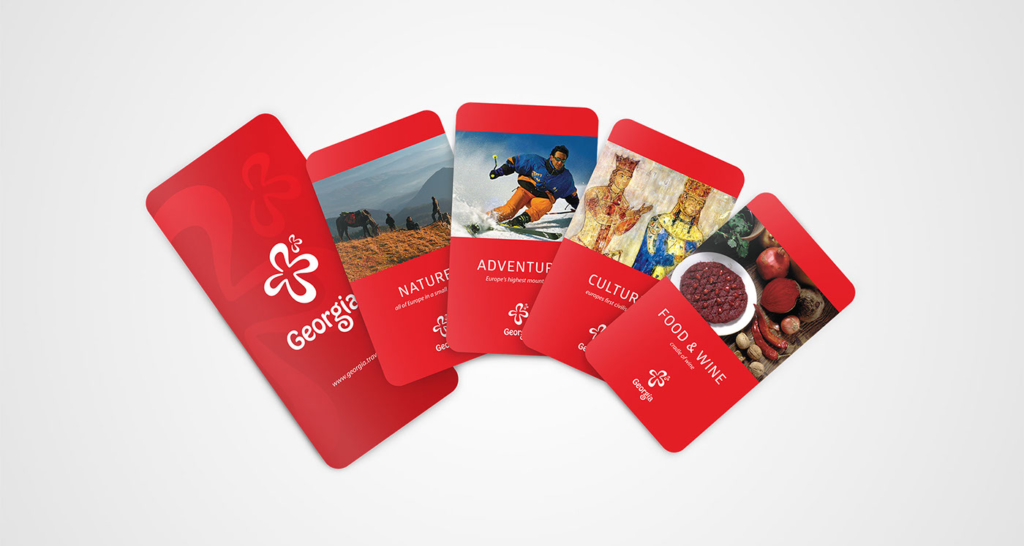
The Georgian National Tourism Agency (GNTA) took the initiative to create a tourism brand for Georgia. In this way, it wanted to ensure sustainable tourism development and increase the recognition of Georgia as a unique tourist destination. The national branding was created in collaboration with the creative agency Topuria Design.
“Georgia is one of the most unique tourist destinations in the world. We aim to help tourists discover the country's potential, diversity and richness. They, in turn, after looking at our tourism brand and Georgian national flavour, should want to return to the country once again,” GNTA admitted.
Azerbaijan: Take Another Look
Azerbaijan unveiled a new identity for the country in the fall of 2018. When creating it, the Azerbaijan Tourism Board was inspired by the phrase: “Take another look”, motivating international tourists to immerse themselves in the unique stories and secrets of the country. The country's national image was developed by the creative agency Landor.
In this brand concept, the designers combined two forms and transformed them into a central symbol – the first letter of the country's name, “a”. The logo resembles a “lens”, which offers a new look at Azerbaijan. There were mixed reactions to the tourism brand. Many people accused the creators of plagiarising Mastercard.
The story of Armenia's logo for $400,000 became one of the most discussed topics of the summer of 2016. Then, Vazgen Kalajyan, executive director of the American advertising agency GK Brand Tribe Globa, posted the process of working on Armenia's visual identity on his LinkedIn page. The concept caused a storm of indignation among the public: people felt that the brand “has nothing to do with Armenia and Armenians at all” and does not correspond to the country's culture, history and values.
The “Eternal Sun” logo is an opening flower, which, according to the authors, symbolises the contribution of Armenians to the scientific, artistic and business spheres. “Like the sun's rays, the flower's petals diverge, recreating the shape of the symbol of Armenia's eternity. The flower petals are coloured in red, blue and orange, similar to the colours of the Armenian flag,” the designers wrote.
Uzbekistan: Naturally Irresistible
Uzbekistan's Intellectual Property Agency approved Uzbekistan's tourism logo in 2014. The Uzbek National Tourism Company Uzbektourism designed it. The country's national slogan is “Naturally irresistible”.
The Uzbekistan logo contains the inscription “Uzbekistan” in a free font. As in the case of Poland, the mountains and domes on the logo are drawn only symbolically and convey culture, landmarks, and national colours. The colour scheme was chosen following the country's flag: blue, red, green.
What does branding for the travel business mean?
For a travel company, branding means creating, developing and disseminating a set of values to distinguish itself from the competition and position itself in the minds of consumers. It means communicating all aspects of a company or a specific product.
Branding is a marketing technique , but it is not marketing!
For tour operators, using food tour booking platforms can enhance the customer experience by simplifying the booking process and providing seamless service management.
You communicate marketing to the market about your travel business, products, or services. On the other hand, branding is what your consumers say about you and your products.
Branding is not a short-term strategy but a medium- to long-term plan. Investing in branding allows you to reap the benefits of your efforts over time. A brand can evolve according to market demand or consumer needs, wants or desires.
Why should a travel agency do branding?
Some people say that small online travel agencies can do without branding. Nothing could be more wrong! This belief is partly dictated by the fact that the branding process needs to be managed, and travel agencies often cannot afford the cost of a brand manager. Many travel business owners associate branding with quality or customer satisfaction. This is partly true, but these are only the results of branding. Branding today is no longer a trend-driven choice but also a necessity to stand out in the online tourism market.
Therefore, to the question of whether a travel agency should do branding, the answer is yes, for the following reasons:
- Distinguishes from competitors
- Increases corporate value
- It serves to create a perception in the tourist
- Increases brand awareness in the tourism market
- Generates consumer trust
- Builds customer loyalty
Let's now discuss an example of successful branding.
Bookatrekking – example of a successful branding
Bookatrekking stands as a stellar example of successful branding in adventure travel. With an extensive portfolio of hiking trips to over 60 destinations, the company has strategically crafted a detailed and effective branding strategy that consistently elevates its brand awareness.
One key element of Bookatrekking's successful branding is its ability to convey a strong and cohesive identity across various touchpoints. From its website and promotional materials to social media channels , the company maintains a consistent visual language, logo, and messaging that instantly resonates with its target audience. This uniformity creates a memorable and recognisable brand image.
The company's commitment to customer experience and quality is also reflected in its branding. Positive reviews, testimonials, and captivating visuals from actual trekking experiences like Tre Cime di Lavaredo Hike contribute to building trust and credibility. Bookatrekking effectively communicates its core values and commitment to providing exceptional adventure experiences, fostering a connection with its audience.
Furthermore, Bookatrekking's branding extends beyond the trips themselves. The company has invested in marketing campaigns, partnerships, and community engagement initiatives, reinforcing its presence in the adventure travel niche. This multifaceted approach ensures the brand remains top-of-mind for individuals seeking trekking adventures.
This team leverages social media platforms, content marketing, and online communities to engage with its audience. Using captivating visuals, compelling storytelling, and interactive content helps create a sense of community and encourages user-generated content, amplifying its reach and impact.
By maintaining a well-defined and consistent brand presence , Bookatrekking has positioned itself as a trusted and reputable choice for hiking enthusiasts. The company's ability to convey its unique selling propositions, coupled with a solid online presence, has contributed to the continuous growth of its brand awareness and success in the competitive adventure travel industry.
How do you create a branding strategy for online travel agencies?
When people talk about strategy or strategic actions, they always think of something overly complex that will take a lot of time and resources to define. Hence, they tend to avoid anything resembling a strategy. However, strategy is fundamental to determining the tactical actions that enable you to achieve specific marketing and corporate objectives.
If you have never created a branding strategy or want to understand how to make one from scratch, you must first know who you are addressing and your competitors.
Who is your brand for?
You must define every aspect of your target buyer and create a fictitious representation of your ideal customer. You must understand their problems, anxieties, fears, desires or needs, what makes them happy, and how you can help them. In short, it represents how you define everything about your consumer. It is good to remember that since it is a fictitious representation, you have to update it according to the actual characteristics of the buyer personas.
Answer the following questions:
- Who do you want to sell to?
- Who are your consumers?
- What needs or requirements do they have?
- Who are your buyer personas?
Great, move on.
Identify competitor brands
Who is fighting against you for a place in the minds of consumers? Knowing your opponents' brands is indispensable when defining a strategy. What do competitor brands position themselves for?
- High quality or low quality?
- High cost or low cost?
- High quality and low cost?
- Low quality and low cost?
- High quality and high cost?
- High cost and low quality?
It is strategic to understand precisely where a competing brand is to implement a diversification strategy. For this purpose, you need to analyse who your current competitors are in the present and who they might be in the future and examine:
- Brand purpose
- Strengths and weaknesses
- Elements of equality
- Elements of difference
- Value proposition
- Products Offered
- Brand colours
Identify the foundation principles of the brand.
What are the principles that led to the creation and development of the brand? On what pillars does the brand rest? What are the core beliefs? Answer the following questions.
Brand purpose:
- Why do you exist?
Brand vision:
- How do you see the brand in the future?
- Where do you want to go?
- What future do you want to build?
Brand mission:
- How can you realise your vision?
- What are you currently doing?
Value of brand:
- What are the principles and values that guide the company's activities?
- What values do you intend to promote?
Define brand essence
Brand essence serves to express who you are as an entity. To do branding in tourism, especially for online travel agencies, you must understand who you are and how you communicate this to the market. Remember that a brand is an intangible attribute that distinguishes you from others and helps create a perception of the potential customer. Therefore, you must understand who you are and how to talk about you.
- What adjectives would you use to define yourself if you were a brand?
- What are your human characteristics? Make a list of 3-4 adjectives that describe your personality.
- What brand do your potential customers want?
- How do you want to be seen and perceived as a brand?
- What elements would make a potential customer choose you and not your competitor?
Branding involves attracting people's attention, making them feel comfortable, conveying your personality, and communicating through your voice. Tone of voice is one of the branding elements that allows you to reinforce your communication messages and persuade the customer through emotion. It is also one of the most complex elements in its definition because a brand must be able to communicate to the customer in different ways depending on the situation.
For example, the tone of voice of a travel agency brand can be refined and elegant when it comes to conveying emotion but also confident when it comes to booking or purchasing a trip. An appropriate tone of voice can enhance a brand's memorability , depending on the context.
To define it, you always have to resort to an internal analysis:
- How do you want people to feel when they interact with you?
- What adjectives describe the brand?
- How can you differentiate yourself from the competition?
- How would you like to talk about the brand? In what language?
Create the brand message.
How can you convey a message, communicate your value and differentiate yourself from the crowd? To do this, you need to identify an online travel agency's unique value proposition first and second a tagline that identifies you. These are the two brand communication elements when referring to your message. Your value proposition positions you in people's minds for something you do better than your competitors and also answers why a consumer should choose you.
The tagline or slogan is an element of a brand's visual identity and reinforces the brand identity . Creating slogans for tourism is essential if you want to emphasise your company's value and communicate it clearly and simply to your audience. Every self-respecting tourism and non-tourism brand should have a strong tagline that people readily understand. However, some companies in the tourism sector do not do this because they manage to communicate the strength of their brand simply and authentically.
This is the case with Booking.com, which has no tagline in its brand because it does not need to communicate its values. Calling up the booking brand, what comes to mind? Probably:
- Best price guarantee
- Free cancellation
- 24-hour assistance
In 2019, Booking.com created a promotional campaign to launch the brand in the US and adopted a simple but distinctive message, “Be a booker”, to stimulate people to get in touch with the brand.

Define brand identity
A brand identity is the set of visual and stylistic elements that make a brand memorable and associated with a product or service. It represents the first point of contact between people and a company from a visual point of view. A brand identity is distinguished by its logo, tagline or slogan , font and colour palette.
Although it sounds easy, designing a brand's visual identity is complicated. Often, when starting a travel and tourism business, the mistake is to immediately create a graphic representation by building the brand. But to make it optimal, you must be aware of each of the previous steps. If you are unaware of why you exist, what you do for the market and your values, how can you represent them graphically?
Depending on your values and vision, you must also choose the colours that best represent you because even colours, on a psychological level, communicate certain aspects of a company. Nothing must be left to chance when developing a brand identity because each element has a communicative value for customers.
Travel & tourism sector branding takes time and resources. It is a process that begins with a profound understanding of the people it addresses. However, designing and developing a brand allows both country (destination) and travel businesses to differentiate from the competition, communicate values and culture, and increase prestige and authority.
What role does branding play in the travel & tourism sector in 2024?
In 2024, branding is more crucial than ever in the travel & tourism sector as it is a powerful tool to differentiate destinations, create unique experiences, and build trust among travellers. Effective branding helps destinations and businesses stand out in a crowded market and influences consumer perceptions.
How can a destination establish a strong brand identity in the competitive travel & tourism landscape?
Establishing a solid brand identity involves comprehensively understanding the destination's unique selling points, cultural nuances, and target audience preferences. Successful branding requires a combination of digital marketing strategies, sustainability initiatives, and personalised experiences to create a memorable and positive image in the minds of travellers.
What impact does technology have on branding strategies for travel & tourism?
Technology is a game-changer in the Travel & Tourism sector's branding landscape. From virtual reality experiences to social media engagement, technology allows destinations and businesses to connect innovatively with their audience. Integrating AI for personalised recommendations, mobile apps, and seamless online experiences is crucial to effective branding in this tech-driven era.
How can sustainability be integrated into the branding of travel & tourism businesses?
Sustainability is a critical focus in 2024, and travellers increasingly value environmentally conscious practices. Brands in this sector can incorporate sustainability into their identity by adopting eco-friendly initiatives, promoting responsible tourism, and communicating their commitment to environmental stewardship. This approach attracts environmentally conscious travellers and aligns with global trends in responsible travel.
In the age of social media, how can travel & tourism businesses leverage platforms for effective branding in 2024?
Social media remains a powerful tool for branding in 2024. Travel & tourism businesses can leverage platforms like Instagram, TikTok, and X to showcase visually appealing content, engage with their audience, and create a community around their brand. User-generated content, influencer collaborations, and real-time updates are essential strategies to stay relevant and connect with the digital-savvy traveller.
Author Bio: Conrad is a professional blogger, content maker, and freelance writer. He has written many excellent and valuable posts on a variety of topics. Conrad loves outdoor activities. He believes the fresh air brings him inspiration for new ideas. You can reach him out through gu***************@gm***.com .
Related Posts
- Time Allocation Strategies for Juggling Game Development Tasks
- The Ultimate Fitness Branding Framework
- 12 Digital Branding Trends for Reaching Customers
- Design Psychology: Understanding Design and Human Behaviour
- The Best Office Chair for Designers (Top 5 Picks)
- The Complete Guide to Web Design and Hosting
- 10 Sustainable Web Design Trends Reshaping 2024
- The Power of Fashion Brand Logos
Need help Building your Brand?
Let’s talk about your logo, branding or web development project today! Get in touch for a free quote.
Leave a Comment Cancel reply
Trusted by businesses worldwide to create impactful and memorable brands.
At Inkbot Design, we understand the importance of brand identity in today's competitive marketplace. With our team of experienced designers and marketing professionals, we are dedicated to creating custom solutions that elevate your brand and leave a lasting impression on your target audience.
The Complete Guide to Branding for Travel and Tourism
By Erick Tomaliwan
Share this article:
- Facebook icon
- LinkedIn icon
- Twitter icon

Your tours and activities shouldn’t be the only unforgettable thing. Guests should remember your tour name , too. That’s where the importance of branding comes into play.
As a marketing tactic, branding personifies your tourism business. It gives you a voice, looks, personality, and values — which makes you more relatable to your guests and other travelers. Ultimately, a well-defined brand helps you appeal to the right audience, as well as leave a lasting impression.
If you want to create a brand identity or tweak your current one, this article is just for you. We outline what you need to know about positioning and differentiating your business — which includes:
The importance of a tourism branding strategy
How to create a memorable travel brand.
- 15 travel branding ideas
So let’s get started:
Frequently, tour and activity operators lose sight of their brand when they rely heavily on Online Travel Agents (OTAs) for bookings. Although these channels help to expand your reach, they don’t necessarily do your brand justice. That’s because you’re just another listing on their site — meaning you get absorbed into their brand identity instead.
Think of it this way. A traveler who books your tours and activities on Tripadvisor encounters the Tripadvisor brand throughout the booking journey — not yours. Consequently, they don’t get much of a chance to become familiar with your business. When it comes to referrals or repeat bookings, they’ll remember Tripadvisor, but will have a harder time recalling your name.
Although this may seem like it isn’t a huge deal — since you can give a glimpse of your brand in-person — it’s not a long-term solution. While listing on OTAs is still a great marketing strategy, it’s important to build your brand outside of these sites. And here are four main reasons why:

1. Branding gets more bookings
When your tour and activity company looks polished and legitimate, guests will be more likely to book with you. That’s because professional translates to trustworthy. With a unique brand voice and beautiful brand design, you’ll make your business stand out as the best option for a safe and unforgettable experience.
2. Branding improves recognition
Without a doubt, your brand is the face of your business. Guests won’t just remember your name, but your logo as well. So whenever they interact with you — whether it’s browsing your website, reading your emails, or seeing your Facebook ads — they’ll be able to recognize your business instantly.
3. Branding makes you memorable
Many think of branding as a logo and a slogan. But it’s so much more than that. From start to finish, a brand is a visual, emotional, and tangible experience that you create for your guests. When you get this right, guests will remember for a long time — not just a couple of weeks after the tour or activity. And those that think of you will be loyal to you.
4. Branding increases your value
Brand equity is the value of your brand name. Having a well-known brand name will help establish your company as a leader in your niche and give your business a boost for further expansion — like opening up a tour office in another location. Since brand equity is all about brand recognition, you can increase your value by building a stronger brand and delivering consistent exposure — which brings us to the next section
If you’re starting your own tour company and haven’t defined your brand yet, make this a priority. Early branding will provide your team with direction, and help customers grasp what your tourism business is all about.
Even if you’re well-established, it’s never too late to fine-tune your brand. Instead of targeting a huge customer base, try thinking of fresh business ideas in tourism and hospitality, and narrowing your focus on a particular niche. Why? Because it can give you a competitive edge and improve your online visibility.
So follow these steps to build a better brand identity:

1. Craft your brand story
Every business has a backstory. There’s always a reason why a company comes to be. Sometimes, it sparks out of an opportunity, but more often than not, a tourism business starts from passion — passion for adventure , the destination, or the community.
Knowing why you started will help to uncover your brand values — which are the building blocks of a compelling brand story. By writing them out and sharing publicly, you’ll have principles to guide your business decisions, as well as a reference point to build trust and credibility.
To dig deeper into your company’s purpose, ask yourself the following questions:
- How did you start your tour and activity business?
- Where’d you get the idea? What inspired you?
- How is your company different from your competitors?
- What does your tour and activity business strive to do?
- What makes your team outstanding?
Work these answers into your brand story to tell who you are as an operator and what sets you apart. Keep in mind that it doesn’t have to be lengthy — brief is best. Nor does it have to be perfect; authenticity goes a long way.
2. Identify your target audience
It’s easier to match your brand to your target audience than the other way around. Depending on your offerings, you might already appeal to a particular group of people — different types of travelers like different types of travel experiences. So branding before knowing your target audience could lead to something that doesn’t make any sense.
For example, let’s say you run a craft beer bike tour. It’s safe to assume eco-friendly, locavore millennials will want to try this experience. But if you build a brand that speaks more to DIY, suburban mothers, there’s going to be a disconnect, and you’ll have a much harder time reaching those initially interested.
Who’s most likely to book your tours and activities then? Where are they from, how old are they, what’s their lifestyle, interests, and personality? These are just a few examples of demographic, physiographic, and geographic attributes you should consider.
Use this information to create a brand identity that your target audience will strongly identify with. You can also use it to gain insight into their communication style, preferred method of booking, and where they hang out online. All of which can help you with your marketing efforts.

3. Align with your destination brand
What’s a destination brand? It’s a shared vision that aims to generate visitor interest by promising a unique travel experience based on everything a place offers. Usually, a Destination Marketing Organization (DMO) builds the destination brand and provides direction for local businesses to follow suit.
Take Ireland as an example. Most travelers visit the Emerald Isle for the pub culture, castle hopping, and traditional folklore. So Tourism Ireland promotes it as a destination to “fill your heart.” This brand position makes new visitors believe they’ll have heart-warming moments while also giving tour and activity operators insight into what they want out of their trip.
That’s why it’s a good idea to find a role within your destination brand. Visitors arrive with preset expectations thanks to it, and naturally, book things to do that match. If you deliver on what they’re looking for, they’ll have a positive and memorable experience — which impacts their perception of the destination, as well as your business.
Of course, this doesn’t mean you have to copy and paste the destination brand. You can still express your brand identity while playing a part in the overarching destination story. It just comes down to making a connection between the two. Like with the above example, a bus tour company might make its brand more enchanting to go along with that of Tourism Ireland.
4. Figure out your brand voice and tone
Your personality, attitude, and values shine through when you communicate with others. The same applies to your tour and activity business. Every written message — whether online or offline — reveals your company’s characteristics and mission. That’s known as your brand voice.
A clear and distinct brand voice helps to position yourself in the marketplace and associate with your target audience. However, it’s got to be the same across all channels to be effective. Being sassy on social media but helpful on the blog only makes readers confused — which means they won’t get an accurate picture of your business.
On the other hand, your tone of voice is interchangeable because it reflects your mood. Its purpose is to have an emotional impact on the reader based on the context of the message. For example, a serious tone works well for a payment request whereas a booking confirmation is better off sounding joyful.
To figure out your brand voice and tone, start by:
- Reviewing your company’s mission statement and values
- Looking at your current content for common themes
- Considering how your target audience communicates
- Evaluating your destination’s brand messaging
Whatever you come up with, break it down into three or four words. These will be your primary voice characteristics for all of your messaging. You can further describe your brand voice in a content style guide with the do’s and don’ts of writing accordingly. As for the tone, you have a little more flexibility with its use, but it shouldn’t stray too far from your brand voice.

5. Give your travel brand a makeover
Here’s where the fun begins. There’s nothing more exciting than putting together a look for your tour and activity business. From a memorable logo to unique typography, you get to make your brand pop while giving your guests a great first impression.
Visual elements also contribute the most to brand recognition. For example, when someone thinks of Google, the first thing that comes to mind is the primary colours. In the tourism industry, Contiki stands out to young travelers with imagery that plays on the Fear of Missing Out (FOMO). So what does your brand design need to get noticed?
- Logo: This is the foundation of your brand identity because it goes everywhere — on your website, social media, merchandise, promotional materials, and more. Whether it’s a logomark or logotype, the design should be simple, memorable, timeless, and accurately symbolize your company’s mission and culture.
- Typography: Believe it or not, fonts come with personality traits. While Serif fonts (Arial, Verdana) come across as reliable and mature, Modern fonts (Impact, Rockwell) give off a bold and progressive vibe. Knowing this, you can use a specific font to influence how guests perceive your business.
- Colour Palette: Similar to fonts, colours have an emotional impact on people. For instance, red means passion, green is natural and blue goes with trust. With the right mix of colours, you can reveal a lot about your business while making your guests feel a certain way.
- Imagery: Photos and videos show the kind of experiences you offer. But images also engage and inspire viewers — helping them picture having the experience, too. That’s why you should use imagery wherever you can. Just remember that brand images should be cohesive too, so consider using presets to promote uniformity.
6. Build consistency into your tour website
This is where everything comes together. Not only is your website a digital storefront, but it’s also the face of your company. Online visitors go there seeking more information about your tours and activities. While doing so, they get a clear picture of who you are as a business, too.
For this reason, it’s important to have brand consistency throughout. That means every page should resemble the other. From the look to voice to feel, your brand should be apparent no matter where someone clicks.
There are several ways to show off your brand on your website. So here are a few must do’s to get you on the right track today:
- Create an About Us page: Sometimes, online visitors want to learn more about your business beyond the Booking page. So share your brand story with them in your About Us section. Here, it’s a good idea also to outline your mission and core values. That way, a conscientious traveler can see what makes you an ethical tourism example .
- Use relevant keywords: Once you know your target audience, you can figure out what search queries they frequently use for travel shopping. These terms will dictate what long-tail keywords you should sprinkle throughout to optimize your website — which includes page titles, headers, body text, meta-descriptions, image alt-text, and your URLs.
- Maintain a uniform design: Your brand should be recognizable based on your look alone. So on your website, make sure you use the same colour palette, typography, and imagery on every page. As well, place your logo at the top, and create a branded favicon (the icon next to the URL) to remind visitors where they’re browsing.
- Remember your brand voice: You have written content everywhere on your website. So there’s a perfect opportunity to strengthen your brand by ensuring all of your copy sticks to your brand voice. You may even consider keeping a blog to establish this further. Just remember that whoever contributes should follow your content style guide.
- Customize your booking process: After taking the time to build your brand into your website, it’d be a shame for your Booking page to miss the mark. Online visitors shouldn’t feel like they leave your site when they go to book. That’s why it’s best to use an online booking system that doesn’t lead to a separate domain and allows for some customization.

15 extra travel branding ideas
Branding your tour and activity business isn’t a one-and-done type of job. The more you do, the more your brand strengthens over time, especially if you make branding part of your strategic planning process . So here are a bunch of additional ways you can help build your brand:
- Hire a professional photographer to take high-quality images of your experiences
- Do the same with a professional videographer
- Partner with a travel influencer that fits your brand
- Create a Facebook contest to create hype for your brand
- Only post content on social media channels that your target audience uses
- Make your tour guides into brand ambassadors
- Contribute guest posts to publications within your industry
- Send out a survey asking guests what they think of your brand
- Come up with different slogans and test which one drives the best results
- Use Answer the Public and Quora to get blog topic ideas that are relevant to your audience
- Customize your booking notifications with your brand voice
- Design templates for your email marketing that follow your brand design
- Come up with a brand hashtag for your guests to use when posting about their experience with you
- Reward your guests for referrals with a discount code
- Let your staff take over social media to show the human side of your business
Need a little help strengthening your tourism brand?

Take your business to the next level
Online bookings. Flexible pricing. Outstanding support.
Related Articles

Step-by-step guide to joining Viator and growing your tourism Business
Viator.com, a proud member of the TripAdvisor company, is the leading global provider for tours and activities. Each month, Viator…
- Business Tips

Defining your value proposition: standing out against the competition
You’re not the only one vying for the attention of your ideal customers Demand for epic experiences is growing —…
Search Blog
Subscribe to our newsletter.
Get tips and strategies to grow your business and impress your guests.
Blog Categories
- Booking Management
- Guest Experience
- Marketing Strategies
- Operator Highlights

What is Destination Branding?
by Bryan | May 11, 2024 | Destination Marketing

In my years focusing on the competitive realm of tourism, I’ve learned that drawing travelers to a location goes beyond just highlighting its scenic beauty and cultural offerings. Destination brands and destination brand development is a fascinating part of tourism marketing. Here are some of my favorite examples, best practices, and strategies for leveraging destination branding effectively.
Definition of Destination Branding
Destination branding, or place branding, is the process of identifying, crafting, and nurturing the unique identity of a geographical location to distinguish it from its competitors. This involves creating a compelling image and message that resonates with potential visitors, encapsulating everything from the visual elements like logos and symbols to the emotional experiences a destination offers. According to Solimar International, destination branding is about “identifying the destination’s strongest and most competitively appealing assets in the eyes of its prospective visitors” (Solimar International).
Essentially, destination branding is the strategic process of differentiating a location, emphasizing a destination’s unique selling point through careful development of the destination brand. My experience has shown that effective destination marketing and place branding hinge on clearly communicating a destination’s brand values, making that destination stand out in the minds of potential visitors.
Example of Successful Destination Branding
A quintessential example of effective destination branding is New Zealand’s “100% Pure New Zealand” campaign. Launched in 1999, this campaign positioned New Zealand not just as a place to visit, but as a destination offering a pure, untouched, and rejuvenating experience. By focusing on the country’s pristine landscapes and adventurous spirit, New Zealand successfully attracted a global audience, significantly boosting its tourism industry.
Destination Marketing Branding Ideas
- Creating a memorable experience through immersive local culture events that differentiate your city from other destinations in a saturated marketplace.
- Identifying the core components of your destination’s unique appeal and leveraging these in all destination marketing materials to attract tourists effectively.
- Engaging local residents as ambassadors for the destination, building relationships that enhance the reputation and narrative consistently across various platforms.
- The managing director or leadership team showcasing insights and success stories through regular interactions with potential visitors on social media, setting your travel sector presence apart from other locations.
- Developing partnerships with influencers and content creators who align with your destination’s values and can reach potential customers, sharing authentic experiences.
- Implementing feedback loops with visitors to understand their needs better and improve the destination proposition continuously, fostering a sense of community and belonging.
- Leveraging technology and innovative solutions to provide seamless experiences for tourists, from virtual tours to mobile apps guiding them through the city, making it easier than ever to explore.
- Highlighting sustainability efforts and eco-friendly initiatives to resonate with environmentally conscious travelers, showcasing your destination as a leader in this fastest-growing industry trend.
- Offering exclusive deals and packages in collaboration with local businesses and suppliers, ensuring visitors get a unique experience not found in other parts of the world.
- Consistently communicating your brand’s story and destination marketing strategy through effective marketing communications channels, focusing on what makes your location stand out to attract tourists and keep them coming back.

Best Practices in Destination Branding
- Identify Unique Selling Points (USPs) – Understand what makes your destination unique. Whether it’s cultural heritage, natural beauty, or culinary experiences, pinpointing these USPs is crucial ( Pro.Regiondo.com ).
- Engage the Community – For branding to be authentic, it must resonate with the local community. Their involvement ensures the brand reflects the true spirit of the destination ( TheChoice.ESCP.eu ).
- Consistent Messaging – Consistency in messaging across all platforms ensures that the brand identity remains strong and recognizable ( ResearchFDI.com ).
- Leverage Digital Platforms – Utilize social media, websites, and digital marketing to share stories, images, and experiences that embody the destination’s brand ( PlaceBrandObserver.com ).
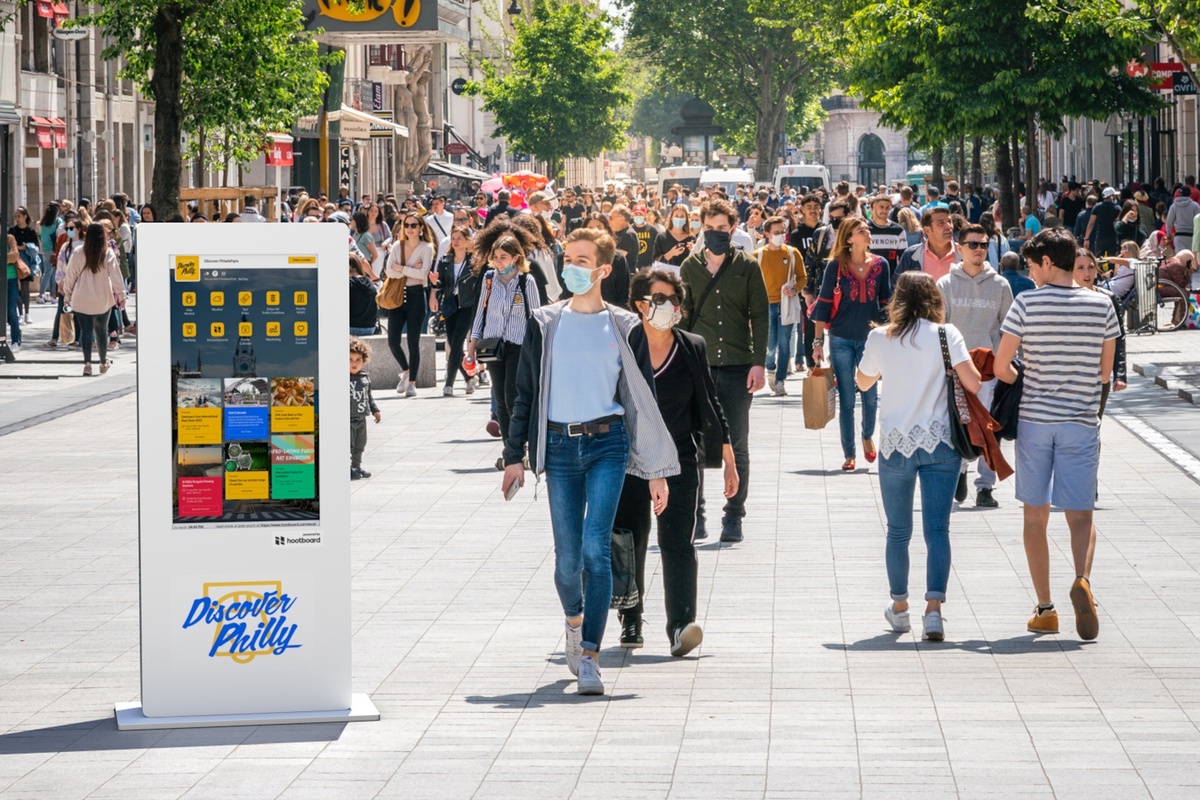
How Destinations Can Use Branding to Drive Tourism
Destination branding can significantly impact a location’s attractiveness to tourists. Here’s how destinations can use it effectively:
- Create Emotional Connections – Through storytelling and imagery, create an emotional appeal that makes people dream of visiting your destination.
- Target the Right Audience – Use your brand to speak directly to the demographics most likely to be attracted to what your destination offers.
- Collaborate with Influencers – Partner with travel influencers who can authentically represent your brand and share their experiences with a broad audience.
- Offer Unique Experiences – Highlight unique experiences that tourists can only enjoy in your destination, reinforcing your brand’s unique selling proposition.
- Focus on Sustainability – Increasingly, travelers are looking for sustainable travel options. Positioning your destination as eco-friendly can attract a growing segment of responsible tourists.
Destination branding is a powerful tool for differentiating a location in the crowded tourism market. It’s important to continue identifying what makes a destination unique, engaging with the community, maintaining consistent messaging, and leveraging digital platforms, destinations can create strong brands that attract more tourists and enhance economic development.
As the world becomes ever more connected, the importance of destination branding will only continue to grow, making it an essential strategy for any location looking to boost its tourism appeal.
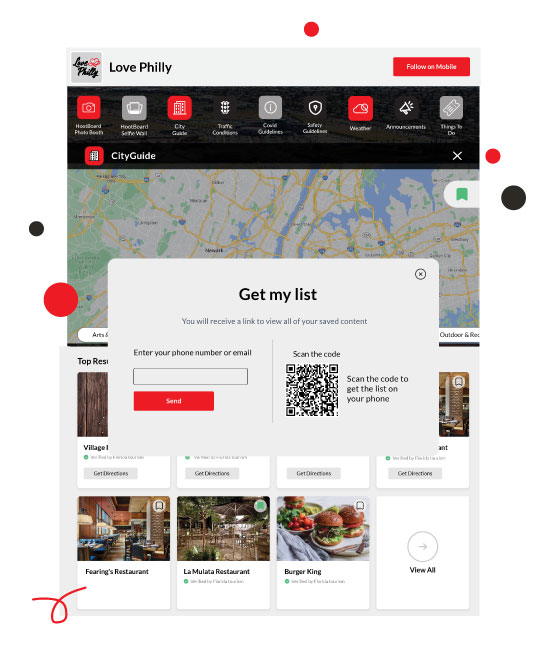
See How HootBoard Can Help Your Destination Brand Marketing
Standing a tourist destination out demands a nuanced marketing strategy that not only captures but also retains the interest of key audiences. HootBoard offers pioneering solutions designed to revolutionize destination marketing, helping to refine your destination brand and elevate brand identity in the tourism sector. Our platform is tailored for destination marketers seeking to craft a compelling story that resonates deeply with tourists, local businesses, and local suppliers alike.
Through HootBoard, your branding process transforms into an engaging narrative, highlighting iconic landmarks and unique destination propositions that attract visitors from around the globe. With our cutting-edge marketing communications tools, developing a distinctive brand personality and building a robust destination image becomes seamless. HootBoard empowers you to weave the key elements of your branding strategy into a cohesive and attractive narrative, designed to captivate and enchant potential tourists.
If you’re looking to redefine your marketing strategy and make your destination a must-visit through effective brand building and a standout branding strategy, explore how HootBoard can illuminate the path to attracting more tourists and fostering memorable experiences. Together, we can turn your destination into a story worth telling and a place worth exploring.
Schedule a Demo
Interactive Digital Signage in Destination Branding
- Company Updates
- Customer Spotlight
- Destination Marketing
- Digital Signage
- Employee Engagement
- Internal Communications
- New Features
- Newsletters
- Product Updates
- Touch Kiosks
- Visitor Information
Recent Posts
How hootboard can improve your community communication strategy, how information kiosks are revolutionizing customer experience in retail, product release update: simplified onboarding for hootboard kiosk users.
- Boosting Partner Profitability with HootBoard’s Innovative Features
- Product Update: Revolutionizing Memories with Our Selfie Print Feature
- Knowledge Base
- Setup a Demo
- Privacy Policy
- Terms of Use
Related Posts

by Mannat | Destination Marketing
Effective communication is the foundation of any thriving community, yet it often presents challenges in today’s...

The retail landscape has evolved drastically, and information kiosks are at the forefront of this transformation. By...
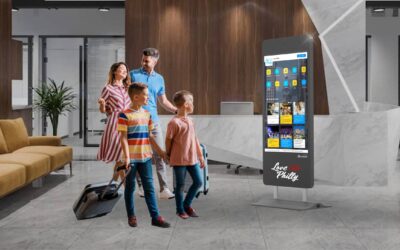
At HootBoard, we constantly strive to make your experience smoother and more intuitive. That’s why we’re excited to introduce our Enhanced Onboarding Experience—a streamlined way for administrators to get up and running with their kiosks quickly and efficiently.
Thank you! Your Download Should Begin Automatically.
Email Address
Organisation
Phone Number
Industry Industry Travel & Tourism Smart City Education Workplaces Industry Agnostic Others
The go-to guide to branding for travel and tourism

By Kevin Tjoe — 14 Mar 2022
destination marketing tourism branding
Updated March 2024 – Picture this: Your tourism guests from one year ago are standing at a barbeque, and in conversation, they happen to rave about the great experience they had with your company. When neighbor Bob asks who he should book with, will your business be remembered and recommended? This is the power of branding travel and tourism.
Whether you’re building your brand from scratch or wanting to refresh your existing business brand identity, read on for a clear guide to branding travel and tourism businesses.
The importance of branding in tourism
What is tourism branding, exactly? It can encompass the name, visual identity, tone of voice, experiences, brand values, and industry associations of your tourism organization. Branding can also have powerful benefits for your business. Some of these can include:
- Building recognition and familiarity for your business
- Helping your target audience to establish trust in your business
- Encouraging guests to find and rebook with you again
- Empowering you to scale and expand your business to other locations and markets.
So where do you begin as you’re developing a robust, memorable brand in tourism?
Essential elements for your tourism branding strategy
Whether your guests are booking through a reseller, directly on your website, or with a local agent, your brand needs to be unique and consistent. Here’s a tourism destination marketing strategy that can make that happen.
Finding the right brand name

It turns out, there’s a lot in a name. A catchy and unique brand name will increase your chances of recommendations and repeat bookings. This handy article dives into how to create the right name for your tourism brand. In short, aim to:
- Research competitor names
- Keep the brand name short and sharp
- Consider how easy the name will be to search for and find online
- Include the location within the name, and
- Trademark and protect your brand name.
Importantly, your brand name should also reflect the unique qualities and experiences your tour or activity business offers. Amaz’n Kayak Tours sounds fun and friendly, for example, while a name like Pinnacle Cruise Experiences exudes luxury and exclusivity.
Creating a strong visual identity through brand design
Every successful brand needs a strong visual identity and brand image, and it can be worth hiring professionals to help you with this process. Ideally, you’ll set up a ‘style guide’ to ensure consistent visual branding. This might typically include information on your:
- Logo Your logo, or graphic symbol, can be used across web, print, social media, reseller sites, and more. As with your brand name, your logo should reflect your tourism experiences and unique aspects of your business.
- Colors A consistent color palette used across your website, booking form , and other marketing collateral will help build recognition and familiarity. You might like to consider the colors of the landscapes in which you operate as a starting point when developing your brand color scheme.
- Imagery The photos you use to promote your tours or activities can matter a great deal when someone is weighing up whether to book. Focus on crisp, high-quality images taken on a sunny day; include the human side of your business, and be sure to capture happy guests with their permission. You might also plan to use a certain filter or color tint to ensure consistency across all images.
- Fonts and typography Fonts are more than just letters on a page; they are a reflection of your brand’s character and essence. When selecting fonts for your travel business, consider factors such as readability, versatility, and alignment with your brand’s personality. Whether you opt for classic serifs, modern sans-serifs, or playful scripts, ensure consistency across all communication channels to maintain brand cohesion.
Creating your brand story
Think about why your tour company exists: what made you start it and what you started with. Consider what makes your tours or activities special and what makes your team stand out. Think about what made you want to run tours, events, or activities in your local area, and what makes them exciting for you.
Answering these questions can help you form a compelling brand story, which can then be shared on your website, social media, and public platforms. A passionate brand story helps your target audience to form an emotional connection with your brand and makes for a far more meaningful tourism experience for guests.
Developing your brand voice

To develop your brand’s tone of voice, think about who your brand would be as a person. How would they talk? What are the quirks that make them likable? Your brand voice can be used across SEO web content , video content , booking steps, and any other marketing collateral where guests might interact with your brand.
For example, a surf lesson company might get on board with touches of laid-back surfy lingo in their automated emails. Or a company offering high-end, multi-day cruises might use more descriptive words to describe silky white sands and their indulgently soft pillows.
Syncing with your destination marketing
Tourism marketing can be unique in that you’re promoting your location as much as you’re marketing your products or services. Destination marketing , where you work with other operators to promote your location at a certain time, can be incredibly important. In fact, research from one accommodation association found that every $1 million invested into destination marketing could return around $16 million in ROI for the local economy. Destination branding is similar to destination marketing in tourism but focuses more on shaping the general perception of the location. Just consider the very different tourism experiences you’ve come to expect from London, Las Vegas, and Tokyo.
It’s important that your tourism marketing strategy aligns with destination marketing efforts for your area so that guests can build consistent and accurate expectations when booking. It can be really useful to network with other tourism operators and work with local agents , such as visitor information centers in your area. Invest in price monitoring software like Dealavo to better understand your price positioning and market dynamics.
Leveraging social media platforms for brand building
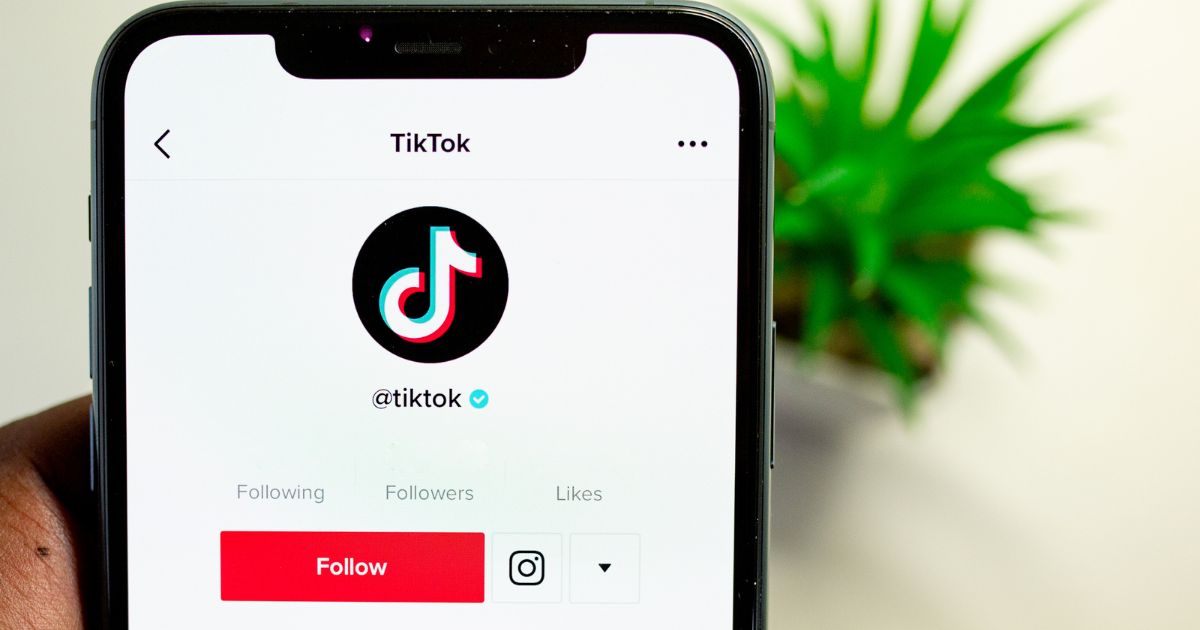
In today’s digital age, social media platforms play a crucial role in brand building for travel and tourism businesses. From Instagram to Facebook, Twitter to TikTok, these platforms offer unparalleled opportunities to showcase your travel experiences, engage with your audience, and amplify your brand message and marketing campaigns. In this modern tourism landscape, it’s important for tour operators to know how to harness the power of social media to create meaningful connections with their stakeholders and attract new customers.
Harnessing the power of testimonials and influencers
Testimonials and influencers can be powerful assets in building credibility and trust for your travel brand. Positive reviews from satisfied customers and endorsements from influential personalities can significantly impact the perception of your business and influence potential customers to book with your travel and tourism business. By exploring strategies for soliciting and leveraging testimonials, as well as collaborating with influencers you can amplify your strong brand reach and engagement.
Make a stellar start with your branding in tourism marketing
A strong, consistent brand can be one of your most valuable assets when running a tour and activity business. If you’re currently building your brand in the tourism industry, then Rezdy makes it simple to create a professional website, gain bookings via your network, and grow your reservations.
A reservation software like Rezdy equips your business with advanced tools such as real-time availability viewer, automatic guest communication, integration to various payment gateways, and further boosts automation within your business’ operations. Furthermore, Rezdy offers distribution solutions that connect you with the industry’s biggest resellers such as OTAs, local travel agencies, or even other tour and activity operators – so you can get your business out there. Rezdy Channel Manager is a distribution platform specifically catered for the tourism industry; connecting operators with access to over 25,000 active resellers worldwide.
Ready to build your brand with Rezdy? Book a free demo , or register for a FREE 21-day trial today.
If you enjoyed this article then make sure to follow the Rezdy blog . There are a lot of marketing tools and tour operator tips designed with businesses like yours in mind.
Start free trial
Enjoy 21 days to take a look around and see if we are a good fit for your business.
No obligations, no catches, no limits, nada
Marketing Basics

What’s new with Google Analytics 4? A guide for tour operators

How to get the most out of your blog as a tour operator
- Their Choice
- Choose to Lead
- Tomorrow’s Choices, Today
- Show Me the Data
- Our mission
- Let’s collaborate
The place to be: lessons in branding from the tourism & travel industry

- The place to be: lessons…
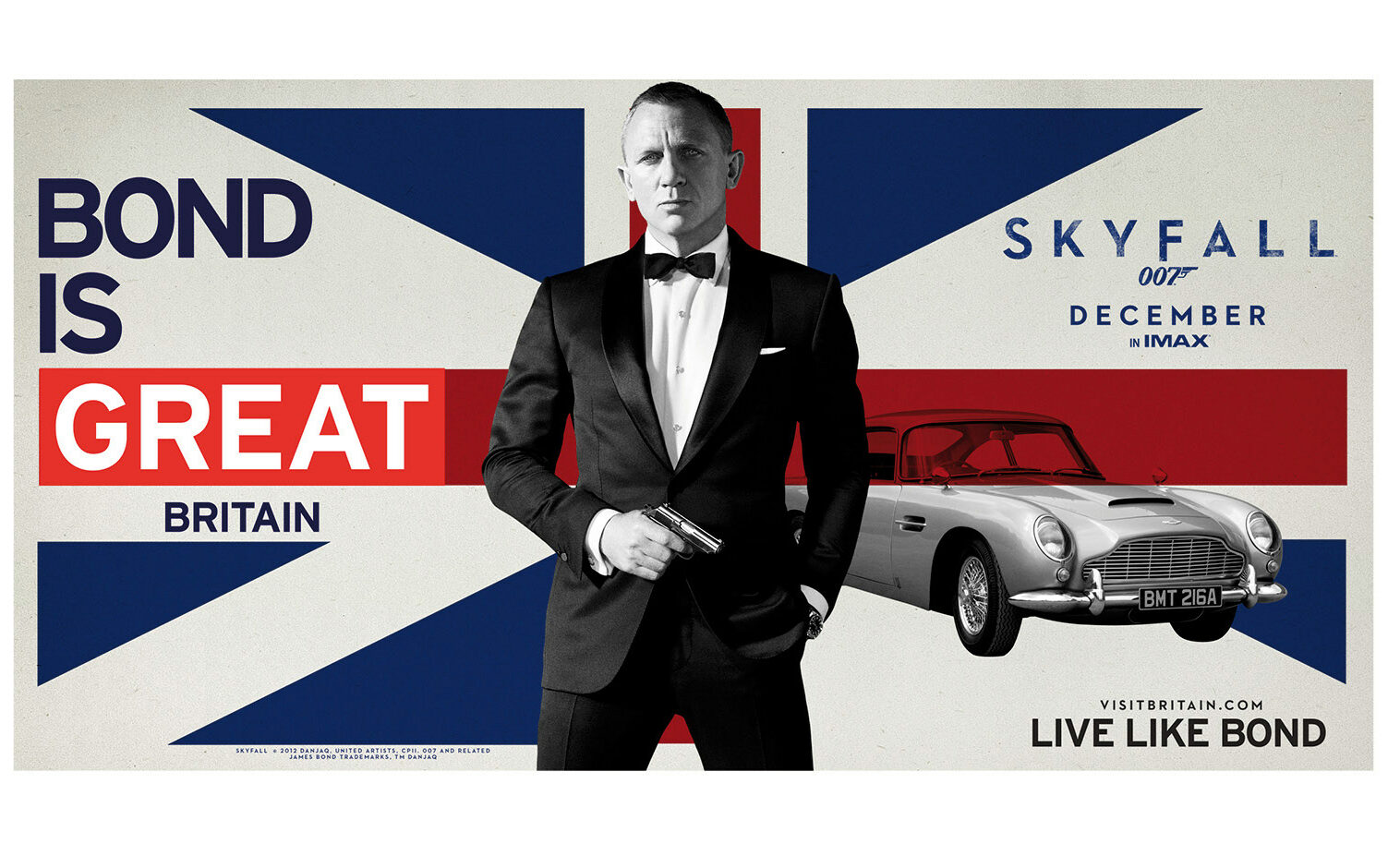
Imagine you’ve just spent the day shopping on Oxford High Street. You take a black cab to Mayfair for afternoon tea at Claridge’s. You have tickets to a show at the West End later that evening, but you stop by for a pint of beer at one of the many pubs named after William Shakespeare. The air is just a bit damp from the rain, and the smell of fish and chips wafts through the air.
You don’t need to have visited London to know which city I was describing. The city’s destination brand is universally strong and recognisable.
What is destination branding, and why is it vital to the economic growth of a place?
According to Tom Buncle, former Chief Executive of Visit Scotland and current Managing Director of an international tourism consultancy: “Destination branding is about identifying the destination’s strongest and most competitively appealing assets in the eyes of its prospective visitors, building a story from these that makes the destination stand out above its competitors, and running this narrative consistently through all marketing communications.”
In other words, a destination brand cannot be created . It is up to tourist boards and destination marketing organisations to identify their destination’s best assets in order to invoke certain feelings, values, cultures, and the overall mindset that people experience when visiting a place.
It also means that people in the destination play a part in contributing to the tourism brand values, experience, reputation, and mindset. Particularly, those in the front-line service industry, which is why the tourism industry is so vital to the economy. It creates customer loyalty and trust, rendering travellers an everlasting impression that could make or break a brand, and in turn, it provides jobs to the workforce.
In the World Travel & Tourism Council (WTTC) annual report on the economic and employment impact of Travel & Tourism for 2019, the sector experienced 3.5% growth, higher than the global economy growth (which reported 2.5% growth) for the ninth consecutive year. Other topline results include:
- US$8.9 trillion contribution to the world’s GDP (US$2.0 trillion in Europe)
- 10.3% of global GDP (9.1% in Europe)
- 330 million jobs, 1 in 10 jobs around the world
- 1 in 4 jobs created by the sector over the past five years
- US$1.7 trillion visitors exports (6.8% of total exports, 28.3% of global services exports)
- US$948 billion capital investment (4.3% of total investment)
If place branding is so important, how do destinations successfully market their brand to make an everlasting impact?
To tackle this question, we will explore some examples of brands that have successfully marketed their destinations and differentiated themselves in this highly competitive industry.
Inspired by Iceland
After the eruption of the Eyjafjallajökul volcano in 2010, Iceland’s reputation as a tourism destination plummeted . Unfortunately, the news of this devastating event was so widespread that the economy was not expected to recover without intervention.
To encourage visitors to consider Iceland as a viable tourism destination, the Icelandic government, along with partners and stakeholders in the travel industry, launched the “Inspired by Iceland” brand. The idea involved a rebrand and an engaging campaign to remind travellers that this beautiful destination was still worth visiting . One of the first campaigns to be released soon after the eruption was Iceland Hour. The campaign leveraged Iceland’s best assets, including local residents and celebrities, to help raise awareness and share stories of positivity. Stories erupted on social media (no pun intended) leading to a reported 22 million testimonials within 10 weeks of launching and has allowed the country to emerge from devastation to triumph. The result was so successful that they saw an ROI of 61:1 with a renewed interest in the country as a desired tourism destination .
Now with the pandemic, the brand continues to use various ways of communicating their best assets through humour, positivity and personality with the Joyscroll campaign and LooksLikeYouNeedIceland campaign hashtag so that when travelling can be safe and normalised again, Iceland would be top of mind for travellers.
Visit Britain
When destination marketing organisations and tourist boards are planning their brand strategy, it’s important to look within their offerings and to be consistent with their core values .
The Love Great Britain campaign focused on culture, heritage, sport, music, nature, food, and shopping. It even partnered with the James Bond movie Skyfall for cross-promotion calling it ‘“Bond is Great Britain” leveraging the legacy of the London Olympics in 2012. A separate page was created to showcase all the iconic landmarks and locations in the movie, giving travellers and fans of the movie franchise a complete tour guide. When it comes to tourism branding, team up with something or someone iconic and globally renowned, even if it is a certain fictional, dashing secret agent.
Visit Britain collaborated once again with another celebrity figure’s upcoming movie release in 2014. The “Paddington is Great” capitalised on Great Britain’s loveable bear and invited visitors to “see Britain through Paddington’s eyes.”
Super, Natural British Columbia
For the past 30 years, British Columbia has used the slogan, “Super, Natural British Columbia” in their marketing campaigns. The brand promises that “from massive mountain ranges and windswept beaches to rainforests overflowing with life, discover how BC’s diverse landscapes shape our people and culture.” Since the slogan has proven the test of time and continues to resonate strongly with the brand’s core image as a popular destination for nature lovers , they have only made visual updates to the artwork and font. With nature and the love for the outdoors being at the core essence of their brand, the custom font personifies and invokes their brand promise: “wild at heart”.
Paris Je T’aime
When examining best practices in tourism branding, one cannot forget to mention the city of romance that is Paris. The “City Brand Barometer 2020” conducted by branding consultancy Saffron, showed that even with the global pandemic, Paris still ranks at the top of the list of desired destinations to visit , thanks to the strength of their brand. Further, the ranking showed London and Tokyo following closely behind in top city brands. The study was created to assess which global cities have built the strongest brands to attract tourists and why. According to Jacob Benbunan , CEO of the branding consulting firm Saffron, “This is the perfect time to work on brand. Of course it is a means to an end. It cannot neutralise the effects of Covid, we may very well have to prepare for a longer term reality of life with Covid, and brand can help cities to be relevant to tourists in the new normal.” To achieve such a high ranking, Paris had to not only already be one of the best-known cities in the world, it also had to embrace its existing reputation as a popular tourist destination with attractions and a rich local culture. For centuries, the French capital has been the global hub for culture, travel, fashion, art, and commerce where it continues to be influential. With 41 World Heritage Sites, it scored highly for accessibility to cultural venues seeing 9.2 million visitors to the Louvre and 7 million visitors to the Eiffel Tower each year .
Essential Costa Rica
One of the top destination branding success stories, Costa Rica has propelled itself on to the global stage as the Best Place Brand of the Year by the City Nation Place Global Forum in 2019. The success of the country’s branding has revolutionised the world’s perception of Costa Rica, thanks to their brand strategy that focused on growing awareness and harnessing the talents of the Costa Rican people . Daniel Valverde Bagnarello, Country Brand Director explains that Essential Costa Rica refers “to a small, concentrated country, full of a unique added value through its talented people.” The slogan maintains that the people of Costa Rica are “the essence” . Since the success of the initiative, they continue to focus on growing their economy from within by seeking partnerships with tourism businesses, working with local stakeholders and incorporating skills and talent of its people that align with the country’s brand messaging, which includes their established reputation for eco-tourism and natural beauty .
In difficult and uncertain times, it is vital to these brands to evolve with new tourism trends but to also stay consistent and resilient with brand building.
The travel and tourism sector is one of the largest and fastest growing industries in the world that contributes significantly to economic growth . In difficult and uncertain times, it is vital to these brands to evolve with new tourism trends but to also stay consistent and resilient with brand building. By continuing to do so, destination brands can build up their personality, voice and perception in the world .
This industry is in it for the long haul. A strong tourism brand can tell us how their place is different from the competition and what unique values they have to enrich your experience.
When travel for leisure can be safe again, I have a few ideas of where I’d like to travel. Do you?
- #LooksLikeYouNeedIceland

Author: Shirley Lui
Shirley Lui works in Marketing, Recruitment and Admissions at ESCP’s London campus. Prior to joining the Higher Education sector, she spent 8 years working as the Manager of Marketing and Creative Strategy at a Destination Marketing Organisation in Canada.
License and Republishing

The Choice - Republishing rules
We publish under a Creative Commons license with the following characteristics Attribution/Sharealike .
- You may not make any changes to the articles published on our site, except for dates, locations (according to the news, if necessary), and your editorial policy. The content must be reproduced and represented by the licensee as published by The Choice, without any cuts, additions, insertions, reductions, alterations or any other modifications. If changes are planned in the text, they must be made in agreement with the author before publication.
- Please make sure to cite the authors of the articles , ideally at the beginning of your republication.
- It is mandatory to cite The Choice and include a link to its homepage or the URL of thearticle. Insertion of The Choice’s logo is highly recommended.
- The sale of our articles in a separate way, in their entirety or in extracts, is not allowed , but you can publish them on pages including advertisements.
- Please request permission before republishing any of the images or pictures contained in our articles. Some of them are not available for republishing without authorization and payment. Please check the terms available in the image caption. However, it is possible to remove images or pictures used by The Choice or replace them with your own.
- Systematic and/or complete republication of the articles and content available on The Choice is prohibited.
- Republishing The Choice articles on a site whose access is entirely available by payment or by subscription is prohibited.
- For websites where access to digital content is restricted by a paywall, republication of The Choice articles, in their entirety, must be on the open access portion of those sites.
- The Choice reserves the right to enter into separate written agreements for the republication of its articles, under the non-exclusive Creative Commons licenses and with the permission of the authors. Please contact The Choice if you are interested at [email protected] .
Individual cases
Extracts: It is recommended that after republishing the first few lines or a paragraph of an article, you indicate "The entire article is available on ESCP’s media, The Choice" with a link to the article.
Citations: Citations of articles written by authors from The Choice should include a link to the URL of the authors’ article.
Translations: Translations may be considered modifications under The Choice's Creative Commons license, therefore these are not permitted without the approval of the article's author.
Modifications: Modifications are not permitted under the Creative Commons license of The Choice. However, authors may be contacted for authorization, prior to any publication, where a modification is planned. Without express consent, The Choice is not bound by any changes made to its content when republished.
Authorized connections / copyright assignment forms: Their use is not necessary as long as the republishing rules of this article are respected.
Print: The Choice articles can be republished according to the rules mentioned above, without the need to include the view counter and links in a printed version.
If you choose this option, please send an image of the republished article to The Choice team so that the author can review it.
Podcasts and videos: Videos and podcasts whose copyrights belong to The Choice are also under a Creative Commons license. Therefore, the same republishing rules apply to them.
Recommended articles

Winning hearts, not just games: the power of emotion in sports marketing

Unlocking the power of AI in the workplace: A practical guide for today’s leaders

Sweet success: How Häagen-Dazs franchises while protecting brand identity
Sign up for the newsletter, sign up for the newsletter.
Get our top interviews and expert insights direct to your inbox every month. The choice is yours, but we don't think you'll regret it.


So, what is a Brand?
A brand is a marketing concept that helps people identify a particular company, product, or individual.
Marty Neumeier, a renowned branding author, clarifies that “a brand is a person’s gut feeling about a product, service, or organization.”
Think of it as the impression a person has of the ‘total’ of the experiences, ideas, and knowledge about your tourism business – their gut feeling if they want to do business with you. Not the actual benefits or attributes of your tourism product or services.
As a marketing concept, branding embodies your tourism business. Your brand gives you a voice , style , personality , and values , making you more relatable to your guests and other travellers.
Ultimately, a well-defined brand helps you appeal to the right audience and leave a lasting impression.
But, first to craft a cohesive brand, you need a Brand Style Guide.
What is a Brand Style Guide?
A brand style guide is a rulebook that specifies every aspect of your brand’s look, feel and voice .
Note: There is no difference between a style guide and a brand style guide; the terminology is simply a matter of preference.
There are, however, two critical components to crafting a guide: writing style and visual style . These are the building blocks of your brand.

Why are Brand Style Guides Important?
No matter the size of your tourism business, a style guide is vital to ensure your brand consistency.
Without guidelines, brands can distort over time and potentially damage your brand value and reputation.
With the increased use of digital marketing tools and the ease of creating content with tools such as Canva, a brand style guide has become vital to crafting a successful tourism brand.
A brand style guide helps to:
- Guarantee brand consistency – Effective brands are consistently recognisable to the client/audience. Marketing materials should be cohesive and easily recognisable to help build brand recognition.
- Set standards and rules – Set rules help to keep the styling simple, consistent and on brand. A brand style guide is not there to limit creativity but to ensure everything appears, well… on-brand!
- Eliminate confusion – Often, how to use brand elements can be vague. Brand guidelines help eliminate queries and allow for speed and a cohesive design.
- Supports creatives and inspires – Sometimes, an open brief can overwhelm creatives and intimidate them, especially those new to the brand. Guidelines help set a starting point that can be pushed while ensuring the design fits.
A well-defined and well-maintained brand style guide lets you present your tourism brand clearly. It also establishes trust with your target audience, all while ensuring that all internal team members and external providers are on the same page.
When a brand style guide is in place, every stakeholder within your business – from customer services, social media, sign writers, graphic designers, PR, and website designers should understand your tourism brand and how to implement it in their work.
What Elements to Include in a Brand Style Guide?
1. brand story.
Before you even contemplate tackling a brand style guide, hone your Brand Story.
Ask yourself these questions…
- What is the name?
- What does it stand for?
- What inspired you to get started?
- What did you get started with ?
- How has it evolved?
- What are your brand values?
- What is your brand promise?
- What is your brand purpose or mission statement?
- What elements make your tourism business entirely unique?
Answer these questions, and you will form a compelling brand story to help you hone your brand style guide. Plus, it will help you develop an emotional connection with your brand, making it a far more meaningful tourism experience for guests.
A logo is the most recognisable element of your tourism brand, making them integral to your brand identity. With that in mind, when crafting a brand style guide, specify:
• Approved versions
- Approved colours
- Spacing and size requirements
- Design dos and don’ts
By including these guidelines, all stakeholders understand your brand’s visual messaging.
3. Typography
For your visual branding, you’ll need to select a brand font for
- and highlighted text.
Outline the font families, desired size, spacing, and weight and their relation to each other with examples.
Pro Tip Remember that some fonts may not be available on all marketing channels. To combat this, ensure the fonts you choose translate across web and print content, emails, internal communication, or social media.
Every brand should have a colour palette they use when developing their visual presence. Brand colours are a powerful way to tie your content together , increase brand awareness , and establish your brand presence .
The fewer colours you have, the easier it is to keep branding consistent. You may choose a set of primary colours across all marketing and promotional materials and a secondary palette as accents.
Show sample swatches and list colour codes for CMYK, RGB and Hex.
- CMYK stands for Cyan, Magenta, Yellow, and Key (black) and is the ink colours used during the printing process.
- RGB refers to Red, Green, and Blue and are the colours of light used by your monitor to display your document on-screen.
- Hex is the code used for web design and is an ‘alternative’ to the RGB code. They are the same but come in different forms.

Include a section in your brand guidelines on imagery – what to use and avoid. Ensure that all of the images used in your marketing feel consistent and on-brand.
Outline which overlay colours and backgrounds are best, what the ideal photography styles are, and how to use photographs in combination with the other visual elements of your brand.
Ensure that all photos stay on-brand by outlining how they should be scaled, composed, and cropped.

6. Iconography
Icons are language independent and easy tactic to convey a message visually. They help users quickly navigate messaging.
Iconography can appear throughout your tourism brand messaging, from your website, email marketing, and social posts to brochures, menus and other collateral. It should be easy to understand and consistent with your brand’s many other design elements to create a unified look across all communications. Icons are a perfect tool in an industry filled with international speakers since no translation is required.
7. Brand Voice
Your brand voice is crucial in creating consistent messaging across your marketing efforts and shapes how your audience perceives you. Also defined as ‘tone of voice’, this is where your tourism brand’s distinct personality should be evident.
Specify in your Brand Style Guide:
- Message architecture – Explain your brand in a few words, i.e. is your brand friendly, traditional, proactively transparent, playful, disruptive, or eco-friendly?
- Vocabulary to use – Advise what words to use – the more, the better!
- Vocabulary to avoid – This is just as important as vocabulary to use.
- Grammar rules – Depending on your audience, do you use Australian English, American English or UK English (seriously, who thought we’d have to clarify English!)?
When your brand has a distinct voice, you tend to make a stronger emotional connection with your audience. So, define your ideal messaging tone in a few words and include examples of communication that match your desired voice. Each rule should be able to reflect an understanding of the intended audience and the reason for communicating.
8. Resources and Tools
Add a list of brand collateral (a media file already created to promote your brand) and a link to a centralised assets library – a simple link on your website called Media File, Dropbox file or other shared file system.
Brand Evolution
Your brand style guide is a living document, so be flexible as your brand will evolve over time.
It’s crucial that once you have created your brand guidelines, they don’t just sit around and collect dust. Not only should everyone on your team have access to it, but they should also be utilizing it as a reference for all marketing communications.

Tania Shirgwin
Founder + Head Consultant
With a wealth of experience across wine, hospitality, human resources, and tourism, Tania is a dynamic force in marketing strategy. Hailing originally from Alice Springs, she has an innate understanding of the unique challenges and opportunities faced by regional businesses in Australia. Tania’s natural ability to connect with people and understand their business needs allows her to craft tailored, practical solutions that drive actual results.
As the founder of Decant Digital, Tania has spent the last 15 years channelling her passion for travel and marketing into a specialised focus on tourism, wine, and hospitality. Her expertise spans strategic marketing planning, consumer-focused web development, business growth tactics and training. With over 80 custom-built websites and numerous successful marketing campaigns under her belt, Tania’s proven strategies consistently increase website traffic, direct bookings, and sales, ensuring businesses thrive in today’s competitive market.
Passionate about driving, Tania loves travelling to meet clients across Australia. As a stroke survivor, she is deeply committed to raising awareness of F.A.S.T. and offering hope to fellow stroke survivors, a cause that is close to her heart.
You May Also Like

Maximizing Your Tourism Marketing Strategy: The Power of Paid, Owned, Earned Media
Thanks to the immediacy and ease of online communication in the digital age, consumers are constantly exposed to a plethora of information. Your marketing is no longer solely about the messaging content you convey. Today, it is also about what guests, reviewers,...

Crafting an Effective Tourism Marketing Budget: Tips & Strategies
A well-structured tourism marketing budget guides your marketing strategy and ensures that you allocate the right resources to promote your business effectively. It is the cornerstone of any successful tourism business. Like many business processes, determining a...

How ChatGPT can Revolutionise Your Tourism Marketing
Artificial intelligence (AI) has become a game-changer for various industries in today's digital age. One remarkable AI tool that has gained significant attention is ChatGPT. This powerful online tool, developed by OpenAI, has the potential to revolutionise the way...

Tourism Greenwashing: How to Avoid it and Control Your Marketing Message
There has been a growing trend of consumers wanting to live more sustainably and make environmentally friendly choices in recent years. As a result, many tourism businesses have started to promote their products and services as 'sustainable', 'green' or 'eco-friendly'...

Public Relations for Tourism: Crafting Your Unique Strategy
Establishing a good reputation is crucial to running a tourism business, as is generating ongoing positive publicity to maintain your brand’s reputation. Think of it this way, as more people become aware of your tourism business, the potential of turning them into...

Improve Your Tourism Website Search Rankings with these Handy Meta Description Tips
The key to attracting more visitors to your tourism website is to make it easily findable on Google and other search engines. Think of it this way, your website has two main, but different goals:1) Rank well on search engines2) Engage and convert your target audience...
LET’S CONNECT
Marketing Inspiration for Wine, Tourism + Hospitality
Join a growing number of savvy Wine, Tourism, Hospitality professionals who receive tips direct to their inbox.
Welcome to the Decant Digital marketing family.
Select the option that closely matches your role Select the option that closely matches your role Wine Marketing Tourism Marketing Hospitality Marketing
- Place Showcases
- Expert Profiles
- Agency Profiles
- Yearbook Features
- Custom Reports
- Browse Collection
- Explore Yearbook
- Impact Story Awards
- City Profiles
- Country Profiles
- Rankings Overview
- Hall of Fame
- Place Brand Consultants
- Country Brand Leaders
- City Brand Leaders
- Destination Brand Leaders
- Econ Dev Leaders
- Public Diplomacy Experts
- Placemakers
- Leading Academics
- Partner Network
- City Branding
- Destination Branding
- Regional Branding
- Nation Branding
- Country Branding
- Talent Attraction
- Economic Development
- Placemaking
- City Marketing
- Destination Marketing
- Nation Brand Value
- Public Diplomacy
- City Reputation
- Country Reputation
- Sustainability Spotlight
- Practical Examples
- Meet Our Experts
- Latest Insights
- Guides & Tutorials
- Research Updates
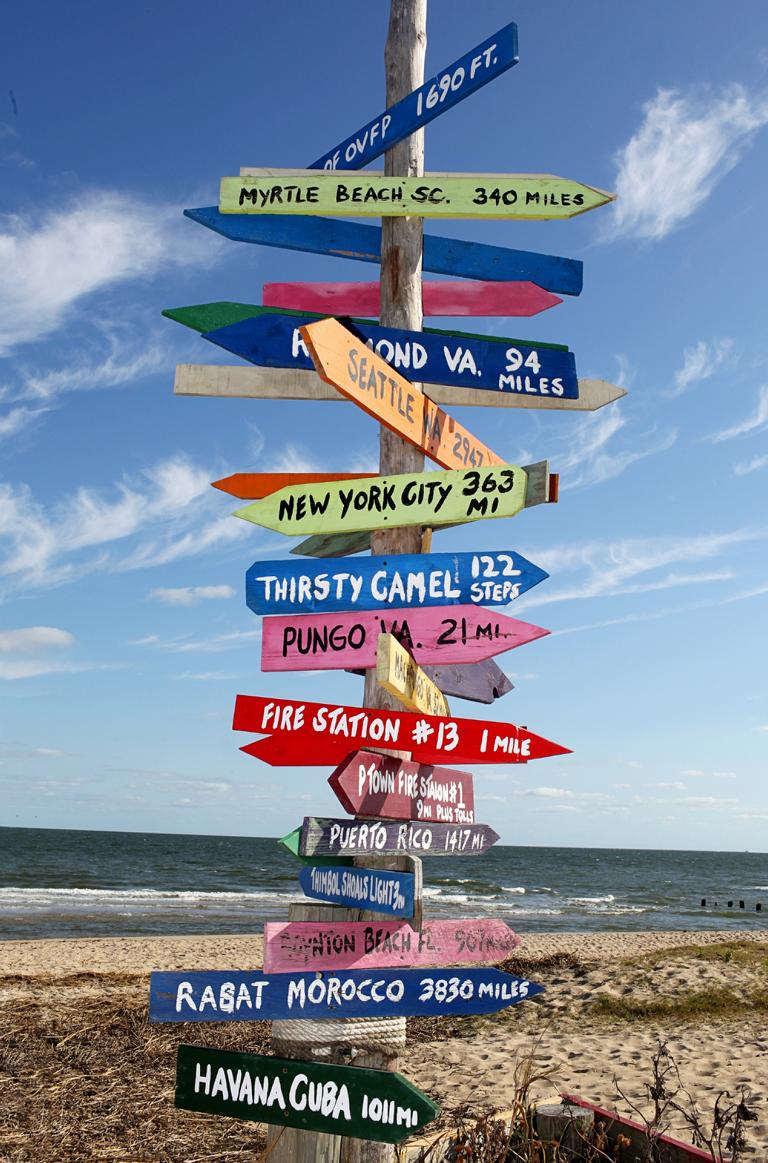
Insights & Strategies: Destination Branding
Destination Branding: Picture yourself flipping through a travel magazine or scrolling through your social feed, captivated by vibrant images and narratives of far-off places beckoning you to visit. Now, that allure, that magnetic pull you feel, is crafted meticulously through destination branding. As the travel and tourism sector grapples with an ever-changing global landscape, traditional marketing can't carry the weight alone. Destination branding dives deeper. It encapsulates the soul, the essence, and the promise of a place, forging emotional connections with travelers and promising experiences that last a lifetime. Embark on a journey with us and meet the world's trailblazing destination branding maestros . Glean insights from their trials, tribulations, and triumphs. Delve into our rich tapestry of case studies to uncover the art and science behind iconic travel destinations. For those with a penchant for detailed analysis, our destination reports offer a deep dive into the anatomy of effective destination branding. Set sail and discover the captivating world of painting places in the best light!
Our Latest Posts on Destination Branding:
Explore the latest posts on destination branding: Dive into a world where art meets strategy, uncovering the essence that transforms a location into a dream destination. Our recent articles pull back the curtain on the methods and magic that make places resonate with travelers. View all .
Leonardo Nieto on Advancing Colombia’s Place Branding and Destination Management
Destination observatory, how to use data to support place branding and location promotion, good practice stories: how important for sustainable destination brands, can destination branding influence sustainable travel behavior, climate emergency or pandemic: how global issues impact destination branding, destination branding research insights.
Destination branding research is a comprehensive area that seeks to analyze and understand how specific locations, such as cities, regions, or tourist spots, are viewed by audiences worldwide. It delves into the elements that shape a destination's image and appeal, taking into account its unique culture, historical landmarks, local governance, economic vitality, and other distinct offerings. This research offers critical perspectives on the intricate dynamics of destination identity, assisting professionals in creating strategies that align with diverse traveler motivations and interests. Utilizing both qualitative and quantitative techniques, destination branding research reveals the deep-seated views that influence how individuals perceive and choose one locale over another, significantly impacting the choices of tourists, event organizers, and global enterprises. Browse through our resources to gain a deeper understanding of the concepts, methods, and real-world examples that encapsulate this vibrant field.
How Place Brand Credibility Impacts Place Attachment, Consumer Loyalty
How tourism advertising impacts destination image and country reputation: example bangladesh, destination brand personality: why it matters and how to build it, sustainability and marketing in tourism: paradoxes, challenges and opportunities, our most popular articles on destination branding so far.
Discover insights from our top-performing articles on destination branding. These standout pieces underscore the strategic move towards authenticity, sustainable practices, and impactful storytelling in the travel sector. A must-read for professionals aiming for excellence in destination development and destination marketing .
Origins and Success of 100% Pure New Zealand Destination Brand
Difference between destination branding and destination marketing, how to brand a city destination: case study vienna, austria, destination branding challenges – how to overcome them, destination branding examples and success strategies.
Dive into the intricacies of successful destination branding. Discover strategies, examples, and invaluable lessons from cities and regions worldwide that have masterfully crafted and executed their destination branding campaigns. Let their successes guide your path forward. View All .

AMAALA Destination Case Study: Reinventing Luxury Through Sustainability in Saudi Arabia
Themba khumalo on south africa’s destination marketing strategy and response to the corona crisis, gieri spescha on the regional branding strategy of graubuenden in switzerland, seeing azerbaijan from a new point of view – destination branding by landor, brian mullis on how guyana promotes sustainable tourism through innovative destination marketing and management, chile: reaching for the stars with astrotourism, let's connect.
Do you have a compelling story of how your city or region has transformed into a top travel destination, capturing the hearts of visitors? Share it with us !
Need guidance with your destination branding initiatives? Reach out, and we'll connect you with a seasoned expert from our TPBO expert community specializing in destination branding.
NEWSLETTER SIGN UP
I agree that my personal data will be processed for the purpose of sending the newsletter. I can revoke this consent at any time and unsubscribe from the newsletter. More about Mailchimp's privacy practices here.
At The Place Brand Observer, we showcase impactful place brand stories and their link to sustainable development. Bridging research and practice, we highlight influential figures shaping the global identity and reputation of cities, regions, and countries. Our focus is on revealing their diverse success stories, insights and experiences.
Quick Links
- Privacy Policy
- Copyright & Disclosure
Copyright © 2024 TPBO. All rights reserved. Designed and developed by Aatoon . Made with Love in Switzerland.
Privacy Overview

- TRANSFORMING
- Branding Keys to Successful Tourism

If you wonder why branding is important in tourism, we challenge you with a counter-argument: is there ever a time when branding is not important?
The time has come to unleash the power of branding in tourism . And to understand how an innovative branding approach for destinations can help reposition and reshape tourism towards a more sustainable, humane, accessible and inclusive model.
A great brand:
Delivers results . Generates growth . Gives you purpose and direction Creates a positive employee culture. Builds trust and emotional connection. Helps you stand out in a crowded marketplace.
But, probably, you are not thinking about the brand but about inflation.
While inflation feels like a mountain in front of us, let’s be fearless and climb it. In fact, many travelers have taken that attitude and are climbing it and are undeterred.
According to the Travel in 2023 report, nearly half of travelers admitted they will be more lenient with their vacation spending habits to make up for the lack of travel in the past two years. The main reason? A whopping 72% report that travel will always be worthwhile with the mood of travelers shifting to “bold adaptability” by 2023 .
And if we have travelers with the attitude and willingness to travel, what are brands doing to be on the radars, plans and minds of those who travel?
This is where the importance of branding comes into play in tourism communication strategies, whether it is a destination, companies, institutions or individuals. Branding will continue to be vital.
Destinations will become increasingly fashionable. Tourism products will have to offer something with which the tourist/traveler can associate, and new destinations perceived as lesser known will have to develop an associated value.
Branding is a tool, not only for marketing, increasingly used to distinguish destinations when the market is saturated with messages and offers. And also to choose which destinations we want to reward with our presence, our time, our attention and our money.
It also means that people in the destination play a role in contributing to the values , experience , reputation and mindset of the tourism brand. It is not only what can be seen or done but also what to experience, discover and feel.
We are increasingly aware and prefer to connect with responsible, sustainable, humane and genuine brands.
Always start with purpose. Purpose is the reason a brand exists. It is the underlying essence that makes a brand relevant and necessary to people. Purpose sits firmly at the core of a brand’s culture and affects every decision. It creates loyalty, affinity, engagement and connections with your employees and customers.
Following by the people who give life, meaning and feeling to the purpose.
The phygital or that constant mix of physical and digital experiences, and vice versa, will also be a growing trend in this new year. Omnichannel, yes or yes.
The search for sustainable tourism will continue. In other words, the aim is to promote tourism that respects the ecosystem, with minimal impact on the environment and local culture. And one that is economically and socially sustainable.
Just as wellness and improved quality of life are driving 2023 travel.
– You will see the emergence of the “culture shock” tourist.
– More people are embracing entirely new experiences in their travels, but still want wellness as the main driver of their trip. This includes general wellness, spa, relaxation and spiritual travel.
– The most attractive destinations should offer relaxation, exploration and inspiration .
– Wellness and improved quality of life will drive travel.
– Technology will be prioritized and pervasive.
– “Work from where I want” is the new “work from the office”.
In 2023 it is more than advisable to work focusing on improving the relationship with employees and customers, redefining the strategy for a new type of demand, understanding the motivations and needs of travelers.
Travelers and tourists will increasingly value brands that have a clear commitment to the environment and people and that implement corporate social responsibility actions.
At TOTEM Branding it is clear to us that 2023 is the year of tourism branding.
We know there’s a mountain ahead, but we chose to climb to the top, and it’s great. Don’t miss your ticket to the future.
Andy Stalman

Cancel reply
Your email address will not be published. Required fields are marked *
clear form Submit
Destination Branding: How To Give Your Destination A Distinct Voice
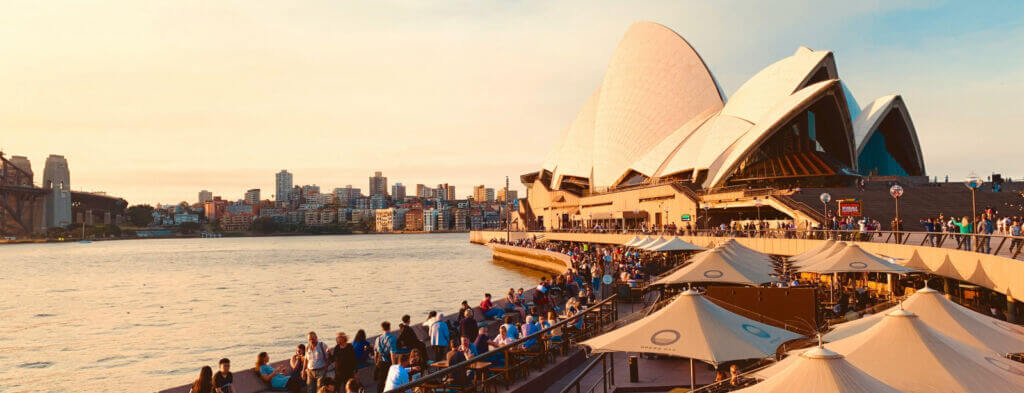
Every Australian who has traveled internationally has, at one time or another, been hit with the same line… throw another shrimp on the barbie! 🦐
But… Australians call them prawns, not shrimps. So, where did this phrase—one that’s become synonymous with describing Aussie culture—even come from? 🤔
After some Google searching, we were stunned to find the phrase was from a $15 million destination branding campaign by Tourism Australia in the 1980s. Interestingly, the ‘Come and say G’day’ campaign was made exclusively for the North American market and the advertisements only ever ran there.
Paul Hogan says “I’ll slip an extra shrimp on the barbie for you” in the iconic destination branding campaign. Image source.
Yet… it worked.
After the destination campaign launched in the US, Australia shot from #78 on the most-desired holiday list for Americans to #7. Arrivals to Australia from America doubled over the first three years and the growth rate over four years was more than 25% .
It was a masterclass in destination branding . The campaign captured Australia’s brand personality, it has a specific target audience and most importantly—it increased tourism numbers.
In this guide, we’re going to dig a little deeper into the power of destination branding, how to build a brand identity campaign, and a few examples that hit it outta the park.
Let’s get started 👇
What’s ahead
What is destination branding.
Destination branding is a unique way to position a city or country to help it stand out and drive more tourism. Instead of a focus on consumerism or attractions, destination branding aims to shape the perception of a destination using culture, brand values, heritage, landscapes, and experiences to help resonate with a traveler.
It’s driven by a modern-day desire to experience something different. In fact, a GetYourGuide study found 95% of American travelers prefer to spend at least part of their trip on new and unique experiences. By branding a destination as different and unmissable—marketers can help travelers meet that goal.
Destination Branding Vs. Marketing: What’s The Difference?
Destination branding is sometimes confused with everyday travel marketing campaigns—and it’s easy to see why. Both strategies aim to drive more tourists and increase awareness of a destination, but there are granular differences between the two.
Destination branding plays a long game.
Brand development focuses on the personality of a destination and will lean on cultural heritage and unique identity to shape a campaign. This involves crafting a narrative that authentically represents the destination’s uniqueness and allure. It focuses on three main attributes:
😎 Identity. A strong focus on history, traditions, natural beauty and unique culture is the foundation of any destination branding campaign.
🤝 Connection . It hits potential visitors right in the feels. Destination branding can help a future visitor connect with a country’s culture, food, unique beauty and history through storytelling .
🥅 Long-Term Goals. It shapes the perception of the tourism destination into a consistent image that distinguishes it from other places.
On the other hand, destination marketing casts a wide net using campaigns, advertisements, and promotional activities. It wants to attract visitors through:
📺 Promotions. A destination’s attractions and activities along with other perks like accommodation and transport are marketed to potential travelers.
🎯 Targeted Campaigns . It focuses on identifying specific market segments and tailoring campaigns to their travel goals.
✈️ Bookings. Destination marketing is all about getting people on the plane (or train… or bus). The main goal is to convert the target audience into paying tourists.
While marketing can win people over for a weekend break or Summer holiday, destination branding goes a little deeper. It aims to connect deeply with a potential visitor and plant a seed so they yearn to visit and one day experience the place themselves.
Why Is Destination Branding So Important?
Destination branding is a critical aspect of marketing for any DMO (destination marketing organization). It plays a crucial role in shaping the perception of a destination and influencing travelers’ decisions.
And countries can spend big bucks to brand a destination.
A decade ago, the United States dropped $150 million on the “Discover America” campaign. It placed television commercials in nine nations, purchased ads on the Tokyo subway, and even had Facebook pages in Portuguese and German. It resulted in an additional 1.1 million tourists visiting the following year, representing a 2.3% increase YoY and an additional $3.4 billion in international visitor spending.
A branding asset from America’s 2012 campaign. Image source: Forbes .
The strategy is even more impressive when applied to destinations that were once , as described by the New York Times , “dangerous and conflict-ridden”.
Just look at the rebranding of Croatia case study.
Stats show in 2018, nearly 560,000 Americans visited the country. But in 1998, a mere 41,000 Americans made the trek. And it wasn’t just more people from the US visiting—nearly 20 million tourists visited Croatia in 2018, up from 1.5 million in 1995.
So, what happened? 🤔
The country did a lot of work to shed the reputation of the ethnic conflicts of the 1990s and any lingering memories of postwar socialist Yugoslavia. Croatia focused its brand messaging on its natural beauty, traditional cuisine and Mediterranean lifestyle to rebrand itself as a hidden gem of European tourism.
Image Source
Since then, millions more tourists have flocked to the country every year, and HBO even filmed “Game of Thrones” in Dubrovnik in southern Croatia.
“Nowadays, Croatia is one of the top destinations in the Mediterranean,” Kristjan Stanicic, director of the Croatian National Tourist Board, explained to the New York Times.
“Our competitors are Spain, Italy, France, Greece and that hasn’t always been the story. People know now that we have great beaches and other things to do.”
Here’s a closer look at why place branding is so important and can turn a country into a must-visit destination 👇
- A better way to carve a unique identity . Effective destination branding can build a unique picture of how a traveler perceives a place. A focus on specific culture, community or heritage can set a destination apart and tourists will know it’s the only place they can have specific experiences. It’s also a way for a destination to shape a narrative and hit back at any misconceptions or outdated stereotypes visitors may have about a region.
- More competitive against other destinations. The tourism market is crowded, and as emerging countries start to take a piece of the pie, effective destination branding can give a location a competitive edge. For example, data shows millions of Americans choose Europe as their favorite holiday destination, so European countries must compete for these tourist dollars. Croatia is a great example of how to stand out from the crowd by leaning on unique features like natural beauty and tradition to win tourists over.
Most importantly, a strong destination brand can have a direct impact on the local economy.
More tourism can lead to more jobs, potential investment and growth of tourism-related businesses, and general prosperity for locals.
Take the example of Australia’s “Come and say G’day’ campaign we talked about at the start of this article. After it was launched in January 1984, it depicted Australia beyond the stereotypes of having dangerous wildlife or just snorkeling on the Great Barrier Reef. Americans were greeted with a sense of humor and warmth, and the campaign made it clear Australia wanted them to visit.
The economic impact was immediate.
The Sydney Morning Herald reports there were 70,000 inquiries from Americans about vacationing in Australia after the campaign launched. Holiday visa applications shot up by 54%. And 285,000 calls were made to the campaign’s hotline 📞
How To Establish A Brand Identity
Any city or region can talk about a zoo or a great restaurant. But what is it about the place that will make tourists really want to visit?
Building a destination brand is all about introspection. If you focus on what makes a destination (really) unique, it’s much easier to draw more visitors in. Here’s what to think about when you create a destination branding strategy 👇
1. Celebrate Your Destination’s Unique Cultural Identity
Embracing the unique cultural identity of your destination is essential for creating a strong brand. Leaning on local history and traditions along with cuisine, art and even folklore can help paint it as a one-of-a-kind destination for visitors.
This strategy is an ideal way to position a destination—even when competition is fierce.
Tucked in the Nordics, Denmark must compete with popular destinations like Norway, Sweden, and Finland for attention. The team at VisitDenmark uses a mix of user-generated content (UGC) , stunning visuals, and a hint of mystery to paint Denmark as the Land of Everyday Wonder.
It also leans heavily into something only Denmark can offer—Norse Viking mythology and the Danish monarchy.
This is a simple example of how destination branding can go beyond beautiful scenery and cuisine to tap into truly unique experiences for visitors.
2. Show and Tell Through Captivating Stories
Most successful destination branding campaigns have one thing in common: a good story.
A captivating narrative about a country’s history, culture, values or even humor can be enough to grab an audience’s attention. By telling a compelling story, it’s easier to craft a narrative about why a destination is a good choice and more importantly, why it should be the top choice.
Destination Canada recently took a different approach to storytelling.
It teamed up with TED to talk about topics that aren’t usually a focus for DMOs. The 14-episode series covered everything from Canada’s extreme climate to the Indigenous communities and even traditional throat singing.
This approach was a true think-outside-the-box approach to destination marketing. Rather than focusing on why people should visit Banff National Park, the series started a conversation around truly unique parts of the country like its culture, sustainability, and climate.
3. Think Like a Local
Local businesses and residents can be an untapped resource for building a destination identity.
These are the people who live, breathe and love the area you want to promote. ( To work with them on unique short-form video, get in touch with our team! ) Put yourself in their shoes and ask: just what is it that makes this place so unique? 🤔
This is exactly what Calgary did with its Basecamp to Adventure campaign in 2017.
The area has stiff competition from major Canadian cities like Montreal, Toronto, and Vancouver, but it was desperate to attract younger travelers to the region. So, the campaign targeted some of the most popular attractions like Lake Louise, Calgary ‘Hoods, and Sled Island, and turned them into fuel to brand the entire region.
Most importantly, the campaign focused on photographs and experiences from real people who had visited the areas in Calgary.
The branding process was successful, especially for native Canadians living in Vancouver and Toronto. The number of 18-24-year-olds visiting the Tourism Calgary website jumped by a whopping 322%.
Destination Branding Examples That Hit The Mark
When it comes to successful destination branding, numerous campaigns have managed to put a place on the map. Let’s take a look at a couple that stand out 👇
Think Outside The Box: The Sheep Campaign That Went Viral
Faroese sheep mounted with Google cameras. (Courtesy of Visit Faroe Islands)
Faroe Islands is often overlooked by tourism juggernauts around it like Scotland and Iceland.
The tiny Danish archipelago has a population of just over 50,000 and it’s so remote that until 2016, it wasn’t even featured on Google Street View.
So, the country’s tourism board, Visit Faroe Islands, petitioned to get Google to map its roads and created the Sheep View 360° campaign. The grassroots campaign began when local residents strapped 360-degree cameras to sheep on the island to capture video, images and GPS coordinates to get the job started.
The campaign went viral and along with a 30% increase in visitors after it launched, Google also took notice.
The best part about the destination rebrand is, despite having no media budget, it generated an estimated $50 million in PR revenue and a staggering 2 billion media impressions 🤯Needless to say it made the tourism board’s stakeholders very happy.
Townsville: Queensland—But Make It Not The Great Barrier Reef
When people think about Australian travel, most will immediately think of destinations like Sydney, Melbourne, and the Great Barrier Reef.
Townsville, a city in North Queensland and a growing coastal destination in the Northeastern part of Australia, is on a mission to change that. Through its local DMO, Townsville Enterprise , and a team of three marketers, Townsville is repositioning itself by focusing on its five main regions: Magnetic Island, Burdekin, Charters Towers, Hinchinbrook, and Palm Island.
“A major challenge of our destination is actually awareness from across our domestic and international markets…Destination awareness is quite low for our region, and we know that off the back of our research, so being able to leverage shared stories of people who have been to our region to use throughout our marketing strategy is really key.”
Simone Sullivan , Marketing Manager with Townsville Enterprise
To stand out from nearby tourism hotspots like Whitehaven Beach and the Great Barrier Reef, Townsville Enterprise focused on marketing its natural beauty, history, and culture. It’s going beyond the wide appeal of every tourist and targeting couples seeking romance, families who want a place to unwind, and even those studying marine science and curious to explore.
With such a small marketing team, branding the destination has been a challenge. Townsville Enterprise decided to harness UGC using CrowdRiff in their various marketing and social media channels to increase content output and make campaigns authentic. By doing so, the DMO can showcase the region’s natural beauty through the eyes of real visitors.
The results have been eye-popping.
Townsville North Queensland has seen a 70% increase in consumers taking action to book a holiday, and there has also been a 116% boost in destination awareness.
“Being authentic and organic is another key component to how we are building the brand of Townsville North Queensland. We want to be real and organic and raw and that’s where social media content and sharing the experiences that visitors have had in real terms comes in.”
Simone Sullivan
Drive More Visitors Through An Authentic Voice
Visitors want to experience something unique. Something different. Something they can’t get anywhere else.
In the flood of social media posts, viral videos, and constant marketing, destination branding gives DMOs a chance to stand out. But a successful strategy requires numerous initiatives and introspection. Think about what makes your destination truly unique and how you can connect deeply with your audience.
Using emotion, personality and identity, destination marketing can help potential visitors in the decision-making process and carve out a place as an authentic experience that someone yearns to have.
And if it comes down to it, don’t be afraid to think outside the box…. Even if it means strapping a camera to a sheep. 🐑
Publish Visitor Guides That Tell Your Unique Story
Create a visitor’s guide that attracts today’s traveler, related content.

Designing a Conference: How We Built SEE2024

What Is User-Generated Content: The Ultimate Guide for Tourism Marketers

Destination Marketing During The Olympics: Advertising Rules and Sports Content Ideas

5 Ways To Elevate Your Travel Marketing Strategy

Making Every Penny Count: Why Creator Content is the Real MVP for Tourism Marketing
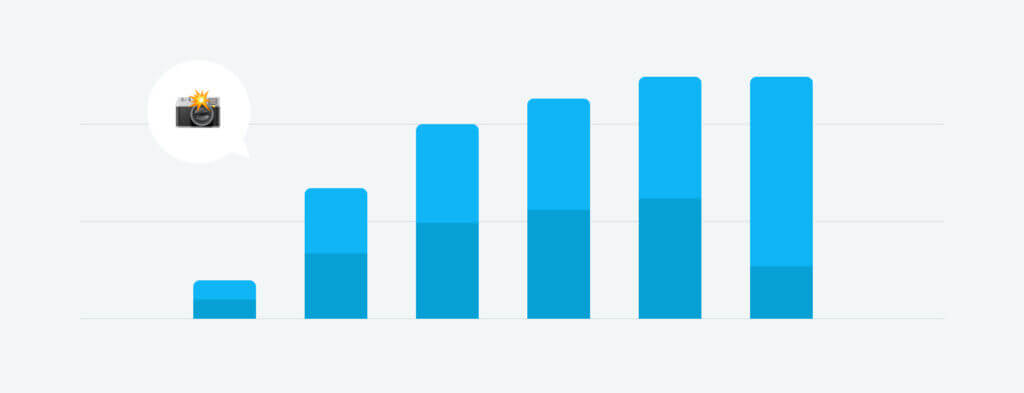
47 Most Important User-Generated Content Statistics for 2024 (and Why They Matter)
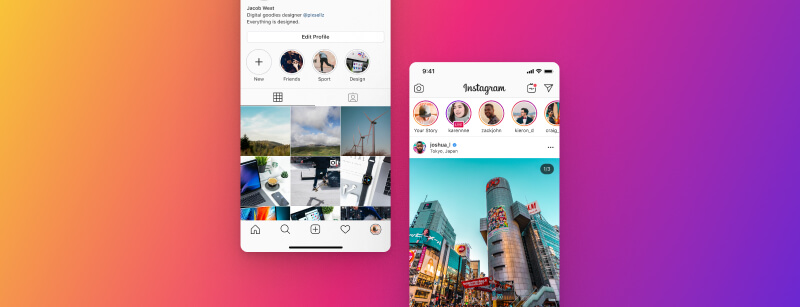
Instagram Reels 2024 Algorithm Update: What Travel Marketers Need To Know

TikTok is Banned in over 30 US states: Here’s What That Means for Tourism Marketing

DMOs & Travel Marketers: How To Get Followers On Instagram

Tourism Marketing: Tools & Strategies That Will Set You Apart

The Destination Marketer’s Guide To Influencer Marketing in 2024

5 Destination Marketing Strategies & Ideas To Promote Tourism

A Guide to Branding in the Travel and Tourism Industry

What is Branding?
Branding is all about establishing your business’ image in front of your audience. In other words, what do your customers think and feel when they see or hear your brand name? With a proper branding strategy in place, you will be able to influence your audience’s perception of your brand in the way that you want.

Why is Branding in the Travel and Tourism Industry Important?
The main objective of branding is to ensure that your business stands out from the crowd. As a travel company or tour operator, you’re well aware of the competition that is currently either providing similar activities and experiences as you or simply operating within your vicinity. You need to ensure your activities make a bigger impression on would-be guests than any of your competitors.
If your activity, excursion, or tour is listed on travel websites like Expedia or TripAdvisor , travellers are even less likely to pay attention to you, the activity provider. It’s not uncommon for customers to associate their experience with a tour or activity with the travel site they booked through instead of the tour company itself. Of course, the reach and exposure you receive by being listed on a popular travel site is great, but it can make it difficult to establish a name for yourself as you end up being just another link to scroll past.
Creating a strong brand for your company can help with all of that. Here is our guide to branding in the travel and tourism industry so that you can attract more customers and increase your bookings.
How to Brand Your Travel and Tourism Company
Discover your brand story.

Everyone has a story and every brand should have one too. A well-crafted brand story connects with your audience and encompasses important things like your company’s mission and vision. That is, what do you provide your customers? How are your tours and activities unique? What do you wish to accomplish and how do you want to grow your tour business in the future?
While what you do and how you do it is important, it’s even more crucial to think about why you do it. What is your motivation and inspiration? Answering these questions may require some self-reflection and discovery, but it’s what your customers are going to potentially connect with the most, especially if their values and beliefs align with yours.
Understand Your Target Audience
You may think understanding your target audience is pretty easy. Your customers are obviously people who want to travel to your destination or experience your activity, right? Well, if you take the time to research your current customers and the potential clients you want to attract, you can learn so much more.
Get to know your customers’ demographic (age, ethnicity, gender, marital status, income, etc.) as well as their motivations, pain points, and values. Why do they seek out experiences like yours, and is there anything they wish they could change about the process? This information will help you brand your tourism business accordingly and can guide future marketing efforts. Collect this data by asking your guests to complete a quick survey or by creating an audience persona .
Develop Your Brand Personality
Brand personality refers to the human characteristics attributed to your brand. Is your tour company adventurous? Daring? Spirited? Enthusiastic? Or is your brand personality a little more calm, easy-going, and sophisticated? However you define your brand personality, make sure it resonates and aligns with the type of guests you want to attract. Your brand personality will also influence your brand’s voice and tone.
Create a Brand Identity

Your brand identity includes the visible elements of your company like your logo, colour palette, typography, etc. Your brand design should help your business stand out from other tour and activity providers. If it’s within your budget, a good marketing or branding agency can work with you to create a professional brand identity. You can also look into hiring a freelance designer, creating your identity yourself, or utilizing services like 99designs by Vistaprint.
Check out these amazing travel logos if you need some inspiration. The best ones immediately convey a certain feeling with their design and make it easy for customers to recognize the activity provided.
Interact and Engage with your Customers
Using social media as a marketing strategy to spread brand awareness is an easy choice. As long as you’re using the correct social media platforms for your target audience, you’ll be able to interact and engage with your customers, helping them familiarize themselves with your brand and building brand affinity. If you’ve outlined a brand voice and tone for your business, make sure you’re following it. For more tips on navigating the social media world, here’s a guide on using Instagram Stories for travel marketing .
Consistency
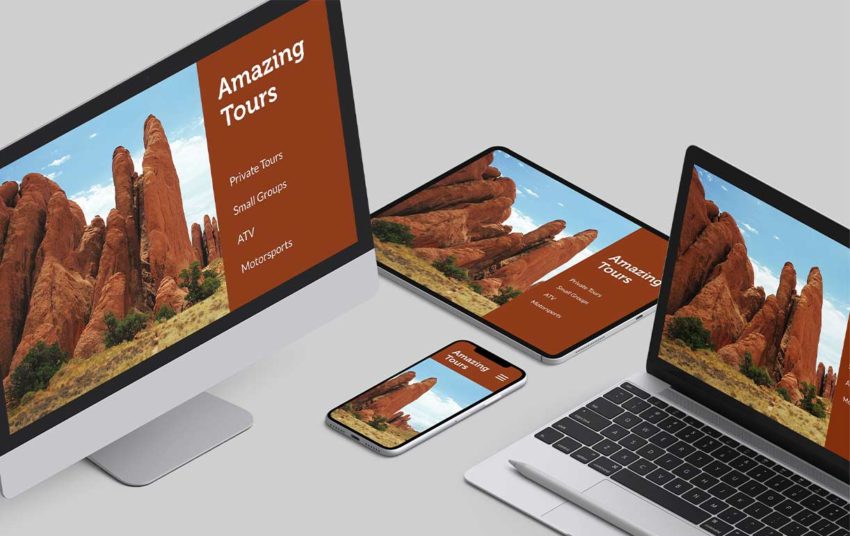
In order to promote a clear brand image, it’s important to maintain consistency across all aspects of your business including your various channels of communication (website, email, social media). Consistency helps develop trust with your customers and delivers a strong, cohesive message. If you’re describing your tour as fast-paced and energetic on Instagram, don’t market it as a relaxing and calming experience on your website.
Destination Branding
Destination branding is similar to what we’ve discussed above, but the focus is on the destination itself as opposed to a business. The biggest difference though, is that you can’t really create a destination brand the way you would for your tour company. Destination marketing is influenced by the experiences and perceptions of tourists and travellers. The reputation of the destination is used to craft a story and build an identity to promote its uniqueness and memorability. Here are 3 examples of great destination brands .
With all that being said, it’s important to ensure that the branding for your own business is aligned with the branding of your destination. For example, if you’re located in a destination known for its serene scenery, relaxing atmosphere, and slow-paced lifestyle, you might not want to brand yourself as being an adventurous, high-energy experience.
Remember, everything that you say, do, or post online affects your brand, so make sure that it’s aligned with how you want to present your travel and tour business to the world. Use this brand-building guide to help you develop awareness, recognition, and affinity for your brand. With some dedication, you’ll soon notice that your business is attracting more customers with an increase in overall bookings.
Looking for more ways to make the most of your branding? Check out our detailed guide on branding for tour and activity operators .

Written By | Edward Nieh
Edward Nieh is a freelance writer and copy editor working across multiple mediums for clients from various industries. He has a degree in creative writing with a focus on screenwriting for feature films.
Previous Article Letter from Founder & CEO - Welcome to Rezgo’s new era
Next Article 5 Rules for Choosing the Best Tour Company Name
Related Posts

Articles , Increase Online Bookings , Tourism Trends
17 innovative tourism business ideas and trends for 2024.
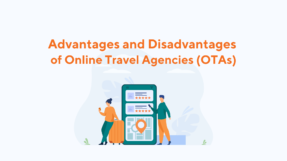
Articles , Increase Online Bookings , Tourism Best Practices
Advantages and disadvantages of online travel agencies (otas).

Articles , Increase Online Bookings , Marketing Strategies
Your marketing mix: the 7 ps of travel and tourism marketing, search the blog.
- All Categories
- Increase Online Bookings
- Marketing Strategies
- Tourism Best Practices
Most Popular Articles
- 17 Innovative Tourism Business Ideas and Trends for 2024 181 views
- How to Create and Promote Amazing Tour Packages 22 views
- Advantages and Disadvantages of Online Travel Agencies (OTAs) 22 views
- How to Create a Business Plan for Your Tour or Travel Company 21 views
- Your Marketing Mix: the 7 Ps of Travel and Tourism Marketing 17 views
I have read and agree to the Rezgo Privacy Policy
GET STARTED
Sign-up for a free demo.
Lorem ipsum dolor sit amet, consectetur adipiscing elit, sed do eiusmo tempor incididunt ut labore et dolore magna aliqua.
Schedule A Demo

Destination Branding
In destination marketing, branding is not about logos, it involves a holistic 360 degree approach to crafting, developing and nurturing a unique identity for the destination according to key elements such as the destination proposition, heritage and values.
In destination marketing, branding is not about logos, it involves a holistic 360 degree approach to crafting, developing and nurturing a unique identity for the destination according to key elements such as the destination proposition, heritage and values. Once established, the destination brand is the foundation of all marketing activities designed to promote the destination and attract new visitors; content and messaging should always be aligned with this in mind. The destination brand is absolutely pivotal to what is communicated to the world.
It is important to acknowledge this concept before starting to talk about the brand because branding is not only about giving a name and colour to a product or place, it is the sum of multiple elements all converging into one narrative which we call the brand.
Destination branding is driven by three main factors, which represent the fundamentals of a destination brand: reputation, identity and perception.
- Reputation is the sum of the beliefs or opinions about the destination, it needs to be built, protected, maintained and changed, if needed, over time.
- Identity has to be driven by authenticity, unique selling points of the destination, consistency and strong personality.
- Perception is mostly made of immaterial experiences, even though material experiences matter as well, and it is subjective, in the mind of consumers.
We explore this in further detail in Stage 4 of our Transformation Series: Shaping the Brand .
In terms of destination marketing, it is all about the brand story and creating one that really resonates with your core audience. First and foremost, this is to secure competitive differentiation in an already saturated marketplace. As the travel industry continues to change at an unprecedented pace, alongside constantly evolving traveller behaviour, the impact of sustainability and living in a hyper-connected world, a strong brand means destinations have the ability to stand the test of time and remain competitive, while still being innovative, dynamic and agile in their approach.
There are many fantastic examples of destinations that have established a compelling brand narrative through different means from powerful storytelling and destination-wide collaboration to a complete destination re-brand.
Ticino Turismo - Rebrand

In 2018, Ticino Turismo , the official DMO of the canton, embarked on a great innovation journey that led them to a complete rebranding after 36 years. The new brand considered many different elements and the process of design thinking was used as a means to co-create the new narrative and branding, collaborating with stakeholders from all the provinces of the region. This was a total digital transformation, and the many different micro-experiences, stories and emotions within the destination are reflected in the new brand you see today.
Check out the full case study.
Destination canada - brand evolution.

Gloria Loree, Vice President of Global Marketing at Destination Canada , joined us at #DTTTCampus this year for a truly fantastic talk about how the DMO has evolved from a destination brand to a passion brand , with insights into the brand journey of this transformation, alongside how to successfully keep up with the speed of change and ever-changing traveller. The strategy shifted from telling people what to do via online ads, to matching target travellers’ personal passions to Canadian experiences, focusing on signature experiences and storytelling.
Watch the talk here .
Singapore - brand stories.
Here at the #DTTT, we consider Singapore Tourism Board as one of the DMOs that continuously innovate its brand with a strategy that focuses on local people, their stories and passions, delivering these powerful messages through effective digital strategies.
Singapore Tourism Board also shifted its strategy to focus on promoting passion, creating passion ambassadors and tribes. A visitor-centric approach, connecting visitors to the destination through personalised, authentic stories based on strong brand values.
Here’s the full case study .
Eindhoven - brand collaboration.

Traditionally, most companies involved in the travel space operated in silos, whereas now we are seeing really strong collaboration across the board, with the customer journey at the very core of this. Whether that is a collaboration with airlines, locals or the whole entire city.
At #DTTTGlobal in 2018, Eindhoven shared its dynamic, all-inclusive strategy, where the DMO created one, open-source brand meaning the brand logo was available and free to use and adapt by anyone in town!
Using the city's strategic advantage of creative and tech talent, and focusing on three key domains of technology, design and knowledge, Eindhoven brought together a team from all different industries within the city to create a truly dynamic identity, one that resonates with key audiences and everyone who lives there.
You can watch the full talk with Peter Kentie, Managing Director of Eindhoven365 here .
Continue reading....
Restricted Access
Subscribe to our newsletter.
Get featured content and updates on our up and coming events.

Effortless booking
Maximize online conversions with the most intuitive checkout online.
Expand revenue with our powerful Automated E-commerce tools.
Upgrade your website to industry’s best. Fresh websites. Fresh revenue.
Amplify visibility and expand earnings with integrated OTAs and local partners.
Streamline check-ins, limit risk, and amplify customer data with built-in digital waivers.
Transform data into insights. X-ray reporting gives you customer and business intelligence.
Manage high-volume walk-up customers effortlessly with POS, ticketing, and gated entry.
Automate management of staff schedules, assignments, and staff communications
Control your business precisely the way you want with endless yet easy configurability.
Allocate equipment used in various products. Prevent overbookings and maximize profits.
Grow with Xola in our constantly expanding universe of integrations and apps.
Harness customer data to drive marketing campaigns and generate repeat business.
Transform your guests into passionate brand advocates. Perfect your products & services.
Manage your business with the most powerful mobile suite in the industry.
Perfect the guest experience by giving your staff the industry’s most intuitive software.
Efficiently manage guest flow, minimize wait times, and ensure maximum satisfaction.
Ticketing & Entry
Revolutionize your guest experience: Effortless check-ins, interactive displays, secure payments.
Boost revenue with automated rave reviews, actionable insights, and loyal customer engagement.
Efficient ticketing, digital waivers, and fast check-ins enhance on-site operations and guest satisfaction.
Explore Xola Universe: 80+ apps, limitless integrations, endless growth opportunities.
Simplify check-in and boost your marketing efforts with our integrated automated digital waivers.
With SOC 2 Type II and CCPA compliance Xola exceeds industry security standards and insures your data protection.
Access real-time insights for business growth with our powerful reporting.
Remarkable and hassle-free guest experiences with waitlist and virtual queuing.
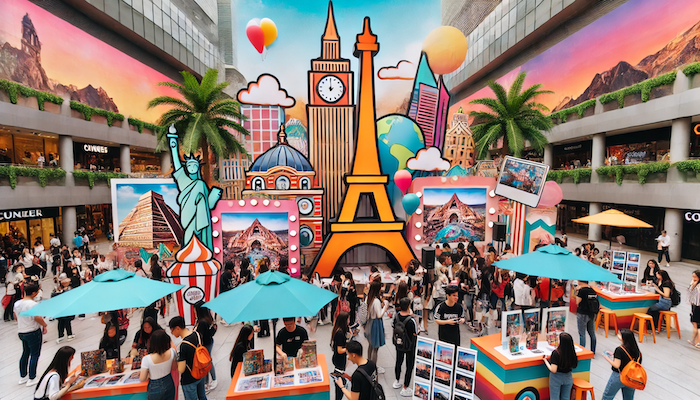
What is a brand activation, and why is it important for travel brands?
- Xola University
7 marketing examples of great travel and tour brands

Odds are there’s more than one tour company competing for your customers’ attention — superior travel branding is a way to win them over.
Every tourism business knows there’s power in branding. As a tour operator, everything from the colors and fonts you use on your website to the way you conduct your tours becomes a part of your brand.
Good branding gives your travel company a personality and makes it easier for you to establish a relationship with your guests.
In this post, we’ll discuss seven travel companies that are pros at branding, plus tips on how you can use your brand to grow your business .
7 ways to grow your travel business through branding
A travel brand is made up of a series of components: company name , logo, website, mission statement, tone of voice, color scheme, etc. When these components are in sync, they make it easier for your customers to identify and connect with your tourism business.
When you solidify your brand, it becomes easier to create a cohesive marketing strategy. Your brand identity should be present in all marketing campaigns; in turn, you’ll see better conversion rates across your channels.
We’ll share key learnings from how seven major players in the travel industry leveraged the power of branding to exponentially grow their business.
1. Keep your travel branding consistent like Airbnb
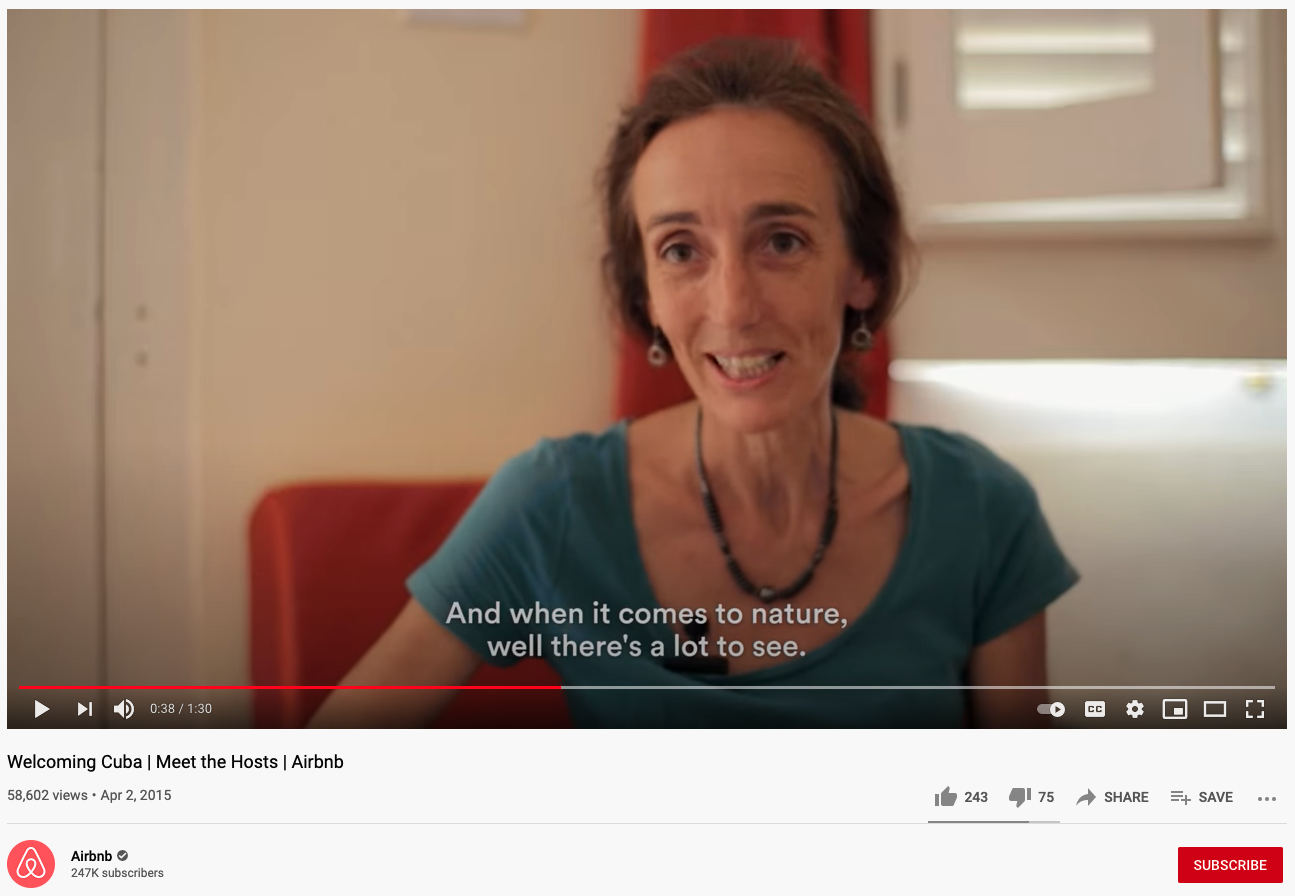
Airbnb is a brand that positions itself as more than just an accommodation option.
It doesn’t aim to compete with your typical luxury hotel; it instead appeals to the culturally curious by promising them a more authentic experience. And the company enforces this brand image across all of its platforms.
The service itself gives people a chance to stay with locals in their homes. Every additional feature the company offers, such as guidebooks and tours, is also led by locals. On Instagram, the company shares photos of unique properties and always ties them back to the host.
The brand consistently promotes the company’s overarching philosophy that interacting with the people who live in a place leads to authentic travel experiences.
What can tour operators learn from Airbnb?
Like Airbnb, tour operators should also ensure their brand image is equally represented across their online marketing platforms. As you’re building your website , remember that the brand you’re selling online should match the feel and voice seen on other platforms, such as your social media accounts.
Think of every customer interaction as a chance to introduce them to your company values and what makes your brand special.
2. Create a powerful logo like New York City
New York City gained its “I Love NY” logo in the 1970s when the city was deemed unsafe and unattractive for tourists. The new logo became the face of a big marketing campaign to bring visitors back to the city.
Today, we know that NYC’s logo is one of the most recognized around the world. You see it on souvenir T-shirts and mugs sold in and outside the city. It’s an iconic symbol that will forever be associated with the positives of traveling there.
This is all to say that a recognizable logo can attract new customers.
What can tour operators learn from NYC?
Aesthetics play a key role in branding. You want customers not only to remember your name but also to recognize your logo.
An effective logo helps make your tour company easy to spot both on and offline. It’s a way for guests to instantly recognize your company no matter what platform they’re on.
3. Engage users through storytelling like National Geographic
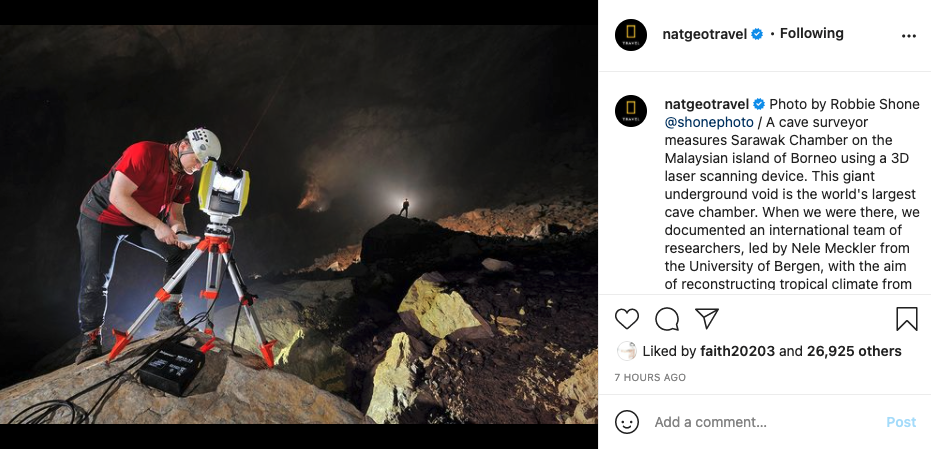
National Geographic has built an outstanding outdoor exploration brand through professional photography and storytelling. More significantly, the media company found a way to differentiate itself from other travel accounts on Instagram specifically — because, let’s face it, there are loads of them.
Instead of just identifying a photo’s location, Nat Geo Travel often features the photographer’s first-hand experience or a traveler reminiscing on that moment in the captions.
It’s a strategy that makes the massive account of nearly 43 million followers feel more personable. The captions show that there are real people behind the photos, making it easier for people to connect with them.
What can tour operators learn from Nat Geo Travel?
Social media is a great place to play around with storytelling.
You can share user-generated content and guest’s firsthand experiences in your captions or even share behind-the-scenes aspects of running a local tour business. The more personable your brand is, the easier it is for your guests to relate to it.
Keep this in mind when you’re writing your tour descriptions , too. Use descriptive language to paint a scene for your guests — whether it’s the aroma of sizzling garlic during a cooking class or the crystal clear water during a snorkeling tour.
4. Learn from Expedia’s user experience
Expedia is a trusted travel brand because it takes the hassle out of booking a trip. People can book hotels, flights, and car rentals on one single platform, which then stores all the information for them.
Expedia’s brand is based on the idea that a stressful process can be simplified. The company upholds this ethos throughout its website, using eye-catching images and social proof in the form of guest reviews to assist guests in their research process.
The brand wants to be seen as a trusted travel partner for post-pandemic travelers, or “a brand that is there for travelers from start to finish,” company exec Shiv Singh recently said .
What can tour operators learn from Expedia?
User experience is just as much part of your brand as your logo. Think about the process of booking tours on your website and whether that matches your brand identity. Is it seamless? Is it intuitive? Is it easy for guests to communicate with you? How is the process impacting your brand identity? After answering these questions, you can start brainstorming ways to optimize your site to drive more bookings .
5. Stay true to your brand like Southwest Air Lines.
Southwest Air Lines has successfully built a cult brand that counts on a band of loyal flyers across the U.S. The airline is known for exceptional customer service, kind flight attendants, and quirky characteristics like colorful airplanes and no assigned seating.
Much of the brand’s identity can be credited to its company culture. Southwest prides itself in putting its employees and customers first, and much of its brand messaging focuses on those values.
Most importantly, the airline delivers. The company tries to reinforce its brand with every interaction. What makes Southwest such a successful brand is that its advertising and marketing are all true.
What can tour operators learn from Southwest?
Southwest is an example of how company culture can influence a brand image. If your company has a fun and engaging brand, make sure to hire tour guides that promote that image. The airline stays true to its values and principles, and tour operators should do the same.
6. Build a reputation like Tripadvisor
The Tripadvisor brand has become synonymous with travel research. The company is seen as a reliable source of travel information because it has curated a massive database of user-generated content, specifically reviews.
The brand is widely recognized as a barometer for quality, so much so that tour operators around the world ask guests to rate their experiences on Tripadvisor.
Tripadvisor rewards brands for getting reviews in competitions like “Travelers’ Choice,” which highlights top-rated destinations, hotels, restaurants, experiences, and more.
What can tour operators learn from Tripadvisor?
Leverage user-generated content to promote your reputation and build a brand that consumers trust. You can do so by displaying testimonials on your website, asking guests to review your experiences, and growing your social media following.
7. Appeal to your niche audience like World Nomads
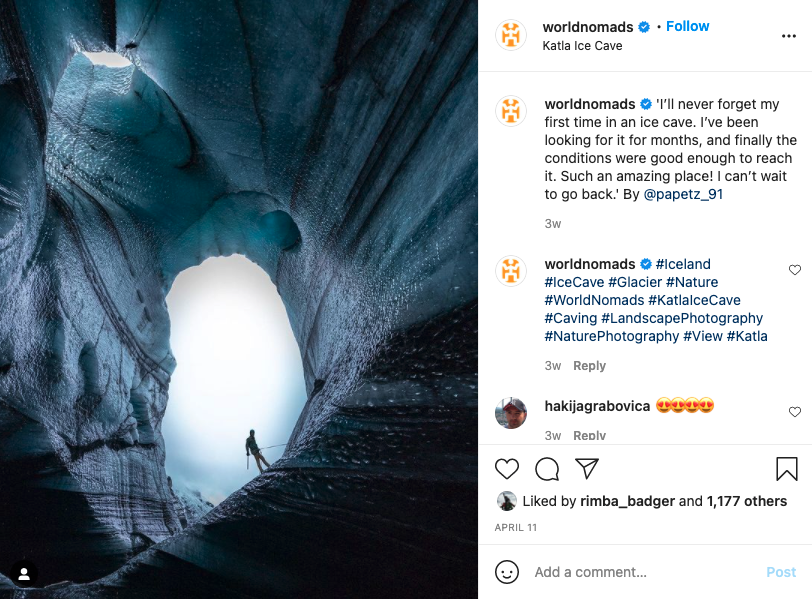
If you looked at the World Nomads Instagram page, you probably wouldn’t guess it belongs to a travel insurance company.
Travel insurance isn’t necessarily the most exciting industry, but World Nomads has spun a lively and engaging brand online. It bills itself as not just a “travel insurer,” but an “adventurous lifestyle brand.”
Rather than appealing to everyone, the brand directly targets an audience it knows will use its services: adventure travelers . It promotes this brand identity on Instagram by sharing photos of scenic landscapes around the world, and on its website, where there’s an entire section dedicated to adventure travel stories.
The company even has a scholarship program for aspiring travel photographers, filmmakers, and writers to further connect with its audience.
What can tour operators learn from World Nomads?
Tour operators can create engaging travel content on their websites and social accounts to appeal to their target audience. Rather than creating a brand that appeals to just anyone, you can focus on a content plan that specifically speaks to your ideal guest.
You should also consider what channels your target audience is using to reach you. If your niche is millennial adventure travelers, they’re more than likely booking travel on their phones. In that case, it’s especially important that your website be optimized for mobile .
The key takeaway? You don’t have to be a massive company to develop a good travel brand, but it sure helps to learn from them.
Feel free to refer back to this post for pro-level travel branding techniques as you work on nailing down your own.
Writer Carla Vianna
Related Articles
From Airbnb’s unforgettable night at the Louvre, where lucky winners experienced the museum like never before, to Delta’s VIP lounge
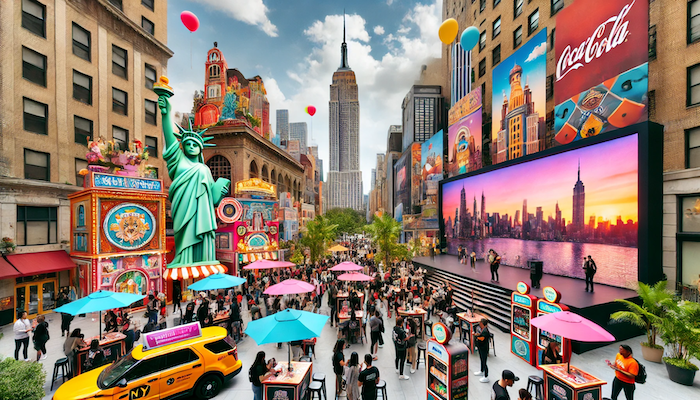
9 most creative pop-up brand activations
Standing out requires more than just offering standard services. It demands creating unforgettable experiences that captivate and engage guests on

Why your holiday park may not be reaching its full potential
When you own and operate a holiday park, speed is king. You don’t have the luxury of having off days
Get the latest news and resources.
For tours and attractions delivered straight to your inbox each week.
Transform your business now.

Tourism and Hospitality Products, Branding, and Pricing
- First Online: 09 May 2021
Cite this chapter

- Richard George 2
3383 Accesses
This chapter explores how marketers design and manage tourism and hospitality products. It begins with definitions for the terms “product”, “offering”, and “product mix”. It the chapter explains that the product is a complex concept that should be considered on three levels. These are the core, expected, and augmented product. Next, the product life cycle concept is discussed and how it is used by the tourism marketer to assess the development of tourism products. Next, the steps involved in the process of developing a new product are considered. In the second section of the chapter, the role of branding in the tourism and hospitality industry is discussed. The third section of the chapter considers the price component of the marketing mix. The factors that affect the pricing of tourism and hospitality products and the various pricing strategies available to the tourism and hospitality marketer are analysed. Next, several pricing approaches used in the tourism industry are considered. The chapter concludes by outlining the characteristics of tourism and hospitality products in relation to price. Last, the chapter’s in-depth case study demonstrates the principles of pricing as applied to medical tourism company MakeOvertour , based in Turkey.
This is a preview of subscription content, log in via an institution to check access.
Access this chapter
Subscribe and save.
- Get 10 units per month
- Download Article/Chapter or eBook
- 1 Unit = 1 Article or 1 Chapter
- Cancel anytime
- Available as PDF
- Read on any device
- Instant download
- Own it forever
- Available as EPUB and PDF
- Compact, lightweight edition
- Dispatched in 3 to 5 business days
- Free shipping worldwide - see info
Tax calculation will be finalised at checkout
Purchases are for personal use only
Institutional subscriptions
Aaker, D. A. (1996). Building strong brands . New York: The Free Press.
Google Scholar
Baines, P., Fill, C., Rosengren, S., & Antonetti, P. (2019). Marketing (5th ed.). Oxford: Oxford University Press.
Baker, T. (2017). Dynamic pricing: an introduction . www.theaudienceagency.org/insight/dynamic-pricing-an-introduction . Accessed 20 November 2017.
Belobaba, P., Odoni, A. & Barnhart. C. (2009). The global airline industry . New Jersey: Wiley.
Ben-Natan, M., Ben-Sefer, E., & Ehrenfeld, M. (2009). Medical tourism: A new role for nursing? Journal of Issues in Nursing, 14 (3).
Boachie, P. (2016). Five strategies of psychological pricing . https://www.entrepreneur.com/article/279464 . Accessed 3 May 2018.
Bookman, M. Z., & Bookman, K. R. (2007). Medical tourism in developing countries . New York: Palgrave MacMillian.
Book Google Scholar
Cooper, R. (1986). Winning at new products . Reading, MA: Addison-Wesley.
Cooper, R. (2014). What’s next?: After stage-gate. Research-Technology Management, 57 (1), 20–31.
Article Google Scholar
Cowell, D. (1984). The marketing of services . London: Butterworth-Heinemann.
Day, G. (1981). The product life cycle: Analysis and applications issues. Journal of Marketing, 45 (Autumn), 60–67.
Dean, J. (1976). Pricing policies for new products. Harvard Business Review, 54 (6), 141–153.
Dibb, S., Simkin, L., Pride, W., & Ferrell, O. C. (1994). Marketing: Concepts and strategies (2nd ed.). London: Houghton-Mifflin.
Fyall, A., Legoherel, P., Frochot, I., & Wang, Y. (2019). Marketing for tourism and hospitality . London: Routledge.
Godin, S. (2003). Purple cow . London: Penguin.
Gregson, A. (2008). Pricing strategies for small business . Vancouver, BC: Self Counsel Press.
Guéguen, N., Jacob, C., Legohérel, P., & NGobo, P. (2008). Nine-ending prices and consumer behaviour in a restaurant. International Journal of Hospitality Management, 28 (1), 170–172.
Gunn, C. (1988). Vacationscape: Designing tourist regions (2nd ed.). Austin, TX: Bureau of Business Research University of Texas.
Hardy, J., Macrury, I., & Powell, H. (2018). The advertising handbook (4th ed.). New York: Routledge.
Hjalager, A. (2010). A review of innovation research in tourism. Tourism Management, 31 , 1–12.
Holloway, J. C. (2006). Marketing for tourism (4th ed.). Harlow, Essex: Prentice-Hall.
Horowitz, M., Rosensweig, J., & Jones, C. (2007). Medical tourism: Globalization of the healthcare marketplace. Medscape General Medicine, 9 (4), 33.
Hudson, S., & Hudson, L. (2017). Marketing for tourism, hospitality & events (2nd ed.). London: Sage.
Keller, K. (2009). Building strong brands in a modern marketing communications environment. Journal of Marketing Communications, 15 (2/3), 139–155.
Keller, K. L. (2003). Strategic brand management: building, measuring, and managing brand equity (2nd ed.). Upper Saddle River, NJ: Prentice-Hall.
Keller, K. L. (2012). Strategic brand management: Building, measuring, and managing brand equity (4th ed.). Upper Saddle River, NJ: Prentice-Hall.
Kilavuz, E. (2018). Medical tourism competition: The case of Turkey. International Journal of Health Management and Tourism, 3 (1), 42–58.
Kim, J. Y., Natter, M., & Spann, M. (2009). Pay what you want: A new participatory pricing mechanism. Journal of Marketing, 73 (1), 44–58.
Kotler, P., & Armstrong, G. (2019). Principles of marketing (17th ed.). London: Pearson Education.
Lasser, W., Mittal, B., & Sharma, A. (1995). Measuring customer-based brand equity. Journal of Consumer Marketing, 12 (4), 11–19.
Laws, E. (2011). Tourism marketing: Quality and service management perspectives (p. 124). London: Continuum International Publishing.
Laws, E. (2002). Tourism marketing: Quality and service management perspectives . London: Continuum.
Levitt, T. (1983). After the sale is over. Harvard Business Review, 61 (5), 87–93.
Lovelock, C. H. (1984). Developing and implementing new services. In W. R. George & C. E. Marshall (Eds.), Developing new services . Chicago, IL: American Marketing Association.
Lumsdon, L. (1997). Tourism marketing . London: International Thomson Press.
Lundberg, D., Krishnamoorthy, M., & Stavenga, M. (1995). Tourism economics . New York: Wiley.
Marn, M., Roegner, E. & Zawada, C. (2003, July). Pricing new products. The McKinsey Quarterly , 3: 40–49.
McCarthy, E. J. (1960). Basic marketing: A managerial approach . Homewood, IL: Irwin.
McCarthy, E. J., Cannon, J., & Perreault, W. (2015). Essentials of marketing (14th ed.). Homewood, IL: Irwin.
Moon, Y. (2005). Break free from the product life cycle. Harvard Business Review, 83 (5), 86–94.
Orr, G. (2014, 22 July). Honestybox hotels: You decide how much you pay’. Independent. http://www.independent.co.uk/travel/hotels/honesty-box-hotels-you-decide-how-much-you-pay-9622062.html . Accessed 24 Aug 2017.
Piazolo, M., & Zanca, N.A. (2011). Medical tourism: A case study for the USA and India, Germany, and Hungary, Acta Polytechnica Hungarica, 8 (1), 136–160.
Pike, S. (2018). Tourism marketing for small businesses . Oxford: Goodfellow Publishers.
Rosenthal, R. (2014). Optimarketing: Marketing to electrify your business . Seattle, WA: Amazon Create Space Publishing.
Russell, M. (2012, 21 April). Richard Branson fails: 14 Virgin companies that went bust. Business Insider . www.businessinsider.com/richard-branson-fails-virgin-companies-that-went-bust-2012-4 . Accessed 7 Dec 2016.
Saleh, S., Husain, F., Saud, M., & Isa, M. (2015). Strategic marketing and competitive analysis of Malaysian medical tourism industry. Proceeding-Kuala Lumpur International Business, Economics and Law Conference 6 , Vol.2. Kuala Lumpa.
Sowrey, T. (1990). Idea generation: Identifying the most useful techniques. European Journal of Marketing, 42 (5).
Stremersch, S., & Tellis, G. (2002). Strategic bundling of products and prices: A new synthesis for marketing. Journal of Marketing, 66 (1), 55–72.
Tanford, S., Baloglu, S., & Erdem, M. (2012). Travel packing on the internet: The impact of pricing information and perceived value on consumer choice. Journal of Travel Research, 51 (1), 68–80.
Tanner, J., & Raymond, M. (2012). Principles of marketing . Boston, MA: Flat World Knowledge.
Taylor, J. & Blackall, M. (2020, February 27). Bunking up: Airline unveils sleep pods for economy passengers. The Guardian , 3.
Tellis, G. (1986, October). Beyond the many faces of price: An integration of pricing strategies. Journal of Marketing, 50: 146–160.
Vernon, R. (1979). The product life cycle hypothesis in a new international environment. Oxford Bulletin of Economics and Statistics, 41 .
Walker, T. (2017, November). The price is…right? 20 The Guardian G2 : 10–11.
Withiam, G. (2001). A“4-C” strategy for yield management. Cornell Hospitality Report, 1 , 4–17.
Zeithaml, V.A. (1988, July). Consumer perceptions of price, quality, and value. Journal of Marketing, 5 2 :2–22.
Zwart, E. (2017). Commercial TV slogans . Retrieved from www.edwinno.com/edwinno-publications/my-writings/commercial-tv-slogans-1. Accessed 21 Aug 2018.
Further Reading
Burgess, C. (2014). Essential financial techniques for hospitality managers . Oxford: Goodfellow.
Slade-Brooking, C. (2017). Creating a brand identity: A guide for designers . London: Laurence King.
Trott, P. (2017). Innovation management and new product development (6th ed.). London: Pearson.
Download references
Author information
Authors and affiliations.
ICON College of Technology and Management/Falmouth University, London, UK
Richard George
You can also search for this author in PubMed Google Scholar
1 Electronic Supplementary Material
(pptx 535 kb), rights and permissions.
Reprints and permissions
Copyright information
© 2021 The Author(s), under exclusive license to Springer Nature Switzerland AG
About this chapter
George, R. (2021). Tourism and Hospitality Products, Branding, and Pricing. In: Marketing Tourism and Hospitality. Palgrave Macmillan, Cham. https://doi.org/10.1007/978-3-030-64111-5_8
Download citation
DOI : https://doi.org/10.1007/978-3-030-64111-5_8
Published : 09 May 2021
Publisher Name : Palgrave Macmillan, Cham
Print ISBN : 978-3-030-64110-8
Online ISBN : 978-3-030-64111-5
eBook Packages : Business and Management Business and Management (R0)
Share this chapter
Anyone you share the following link with will be able to read this content:
Sorry, a shareable link is not currently available for this article.
Provided by the Springer Nature SharedIt content-sharing initiative
- Publish with us
Policies and ethics
- Find a journal
- Track your research
- Why We’re Different
- Join Our Team
- Collaborators
- Why Tourism
- Strategic Planning
- Tourism Development
- Workforce Development
- Destination Management
- Destination Marketing
- Solimar DMMS
- Creative Portfolio
- Testimonials
- Tourism for Development Blog
- Case Studies
- Useful links
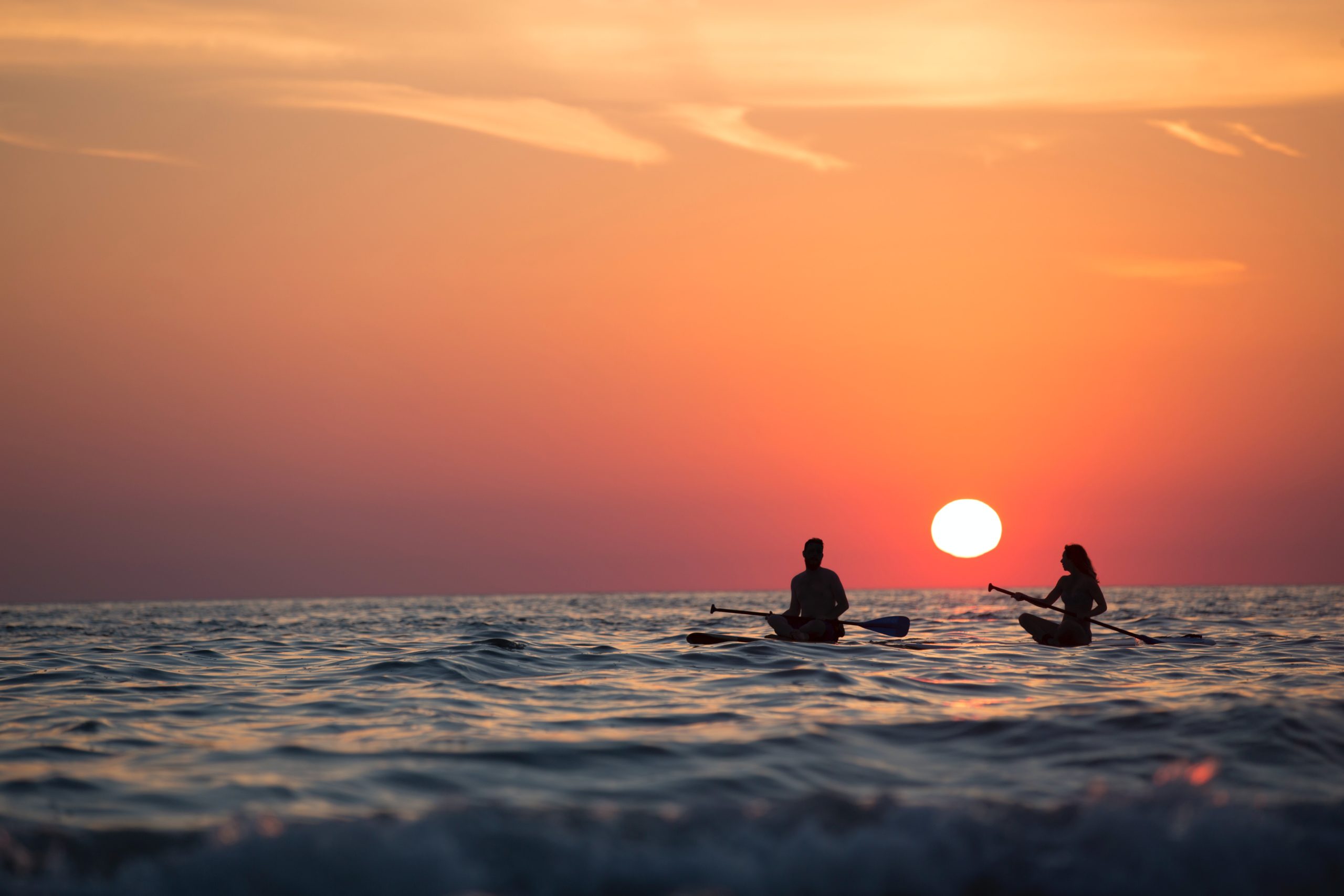
How to Brand Your Destination: a Complete Guide
Written by Caitlyn Marentette on June 6, 2022 . Posted in Blog , Uncategorized .
Want to learn how to successfully make your destination stand out from the competition? This article tells you all about destination branding and how to build your own original brand!
How to Build a Successful Destination Brand
The tourism industry is one of the most universally robust industries in the world. Hundreds of thousands of people travel every year, and there are many types of travelers who feed into the industry. Even more people work in the tourism sector. So, how do you attract potential visitors to your tourism destination?
There are plenty of approaches to attract potential customers to a tourist destination. Social media, marketing campaigns, and word of mouth are just a few ways to achieve this. You might see photos of dazzling landscapes on Instagram, see a hotel ad on TV, or read a post about a famous tourism destination in a magazine. What these things have in common is a recall to what makes a destination unique, important, or appealing to a specific audience.
Bringing these features out through tourism marketing is a tactic called destination branding. Think about a famous city—Berlin, for instance. There are a number of images that you probably think of when Berlin comes to mind: the (in)famous Berlin Wall, the unmatched cosmopolitanism, the tall-standing TV Tower, and the authentic Brezeln . A collection of cultural markers like these produces a profile that is unique to Berlin. These markers can then be used to produce and to employ a marketing strategy that attracts potential tourists to Berlin. Of course, this is not specific to just one city; any site can have a brand identity.
So, the question remains: how do you produce a successful brand for your site? Below, we have compiled a short list of items to get you started on building a successful destination brand.
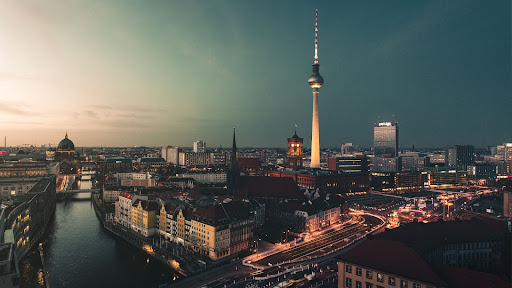
Berlin TV Tower (Fernsehturm) has become an iconic piece of Berlin’s identity, completing the panorama of the city alongside Brandenburg Gate or the Berliner Dom
A Brand is the Most Valuable Tool in your Marketing Strategy
A brand goes far deeper than a logo or company slogan. These are simply considered marketing tools. A brand is defined by the public perception and the emotion it makes you feel. It is the promise being made to the target audience that is derived from the product or destination’s uniqueness. Your brand ing efforts are the process of creating brand messaging and experiences that attract visitors. These should be as compelling and memorable as possible, in order to draw in potential customers. Successful branding occurs when this experience remains in the hearts and minds of the target audience.
Developing a Valuable Destination Brand Identity
Developing your brand identity, or brand personality, revolves around three main axes:
- Destination uniqueness ;
- Stakeholders’ and travelers’ perceptions; and
- Consistency in the marketing campaigns.
A strong brand identity is essential when you are trying to reach potential tourists and attract them to your destination. We could define the brand identity as a summary of the destination’s main traits, the words your main audience would use to describe the destination.
Does your destination offer a wide array of cultural experiences? Are most visitors coming to your destination to relax, or do they come to challenge themselves and take on new adventures? Is your destination mostly suitable for families, groups of friends or romantic getaways?
Developing your brand identity starts by auditing your destination and identifying your main target. It is recommended to involve stakeholders to better understand how they perceive the uniqueness of your destination. Start a conversation with small tourism businesses, travel agents and tour operators promoting your destination, local authority or former visitors and gather their emotions about your destination.
Including the consumer perception of your destination will ensure that the appropriate types of travelers are targeted in your brand messaging. Do not neglect to take a look at competition – locally or internationally – and to think it through: “What do I offer that is different?”, “What is our added value?” You can read an example of destination branding through consumer perceptions from Croatia .
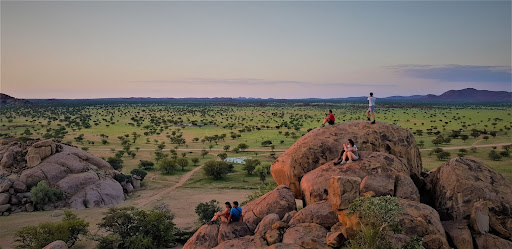
The wide open Namibian landscape – understanding the consumer perception of your destination’s uniqueness is key to build a strong brand identity
Understanding the travel motivations of your visitors, as well as their decision-making process, will support you in building a suitable brand messaging. Associate experiences with your destination which are as distinctive, compelling, memorable and rewarding as possible. Take the example of Namibia’s online marketing campaign which Solimar ran between 2011 and 2013 that emphasized the breathtaking and seemingly endless natural landscapes of Namibia.
Once this message is clear, your marketing campaigns will help spread your identity and reach your targeted audience. The key in the marketing campaign is consistency! Make sure the brand messaging perceived is coherent on all the elements of your integrated marketing communication . Each support and channel should represent the same brand identity.
Moreover, the consistency of the brand identity continues on the spot where it is important to build brand value at each point of contact, from signage at the airport to landscapes while driving to the hotel or between parts of a destination. The experience of the traveler must reflect your brand identity.
Finally, keep track of the success of the campaign and reassess your strategy every year, or if a major event has disrupted your campaign (Covid-19 anyone?).
In short, developing a powerful brand identity consists of:
- Running a destination audit
- Clarifying who is your target
- Building your destination SWOT
- Identifying your competition , their location, and your added value
- Involving local stakeholders in your branding process and assess their perception of the destination
- Reassessing your Marketing Strategy annually

Using the Brand Pyramid for a Strong Destination Brand
One of the most effective ways to produce a powerful destination brand is by using a brand pyramid. Brand pyramids are models that distill the important elements of a site down to an advertising essence. Brand pyramids are important for destination branding, because they clarify the most important aspects of the destination. This helps produce a tagline that markets the message of a destination to potential visitors.
There are five tiers in the brand pyramid, which are organized from a wide base to a narrow top. The first tier, labeled rational attributes , are tangible destination characteristics. In other words, rational attributes are the markers that can be empirically observed. The physical, quantifiable features of a site are listed here. These features can be diverse, ranging from unique products and services to local cuisines to historic landmarks.
The second tier is labeled emotional benefits . These are the feelings associated with a site. This tier plays a crucial role in creating a destination brand, because it addresses the tangible emotional experience(s) of visiting a site. The first two tiers work together to create a strong brand image by listing tangible attributes alongside the emotional sentiments that the site produces.
The third tier of the brand pyramid is brand personality . This lists a group of adjectives that describe the personality of the site. This is how a target audience will describe a site in a few basic words. The brand personality can describe atmospheres and resources, and they can also attract specific audiences. As the public health situation evolves, a brand personality can illuminate how amenable a site is to a specific audience.
The fourth tier, the positioning statement , describes the one-of-a-kind site attributes. Here, brand developers ask which characteristics are seen or experienced only at that site. This is an especially important step in the brand development process. Knowing what makes a site stand out will give shape to a strong brand identity.
The final tier is brand essence . The brand essence is exactly what it sounds like: it distills aspects of all the tiers below to produce an essential brand identity. This is what the brand means, described in a few words. This is the tier that creates a destination brand, usually in the form of a tagline. A great example of the destination branding process was successfully implemented in Solimar’s Jamaica Community Experiences project from 2015-2018.
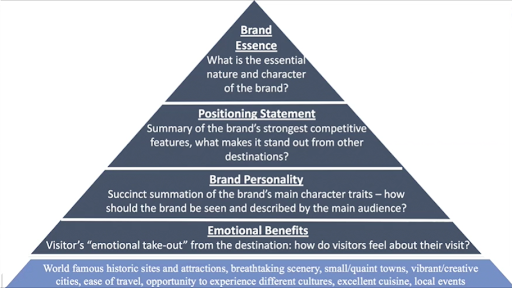
Brand Pyramid model to build a powerful destination brand – Solimar DMO Development Program
Looking for more destination development strategies? Check out Solimar’s Institute for Sustainable Destinations program on DMO Development . Or Contact Us directly for information!
Authors: Caitlyn Marentette / Célia Hulin / Thomas Kalchik
Tags: #SustainableTourism , #tourismstrategy , branding , brandpersonality , campaign , Destination Management , dmo marketing , dmodevelopment , marketing , tourism , tourism marketing , tourismresearch , travel

This is a short description about myself and what this site is about. I hope you enjoy being here!
Destination marketing in tourism: what brands need to know.
In Blog , marketing .
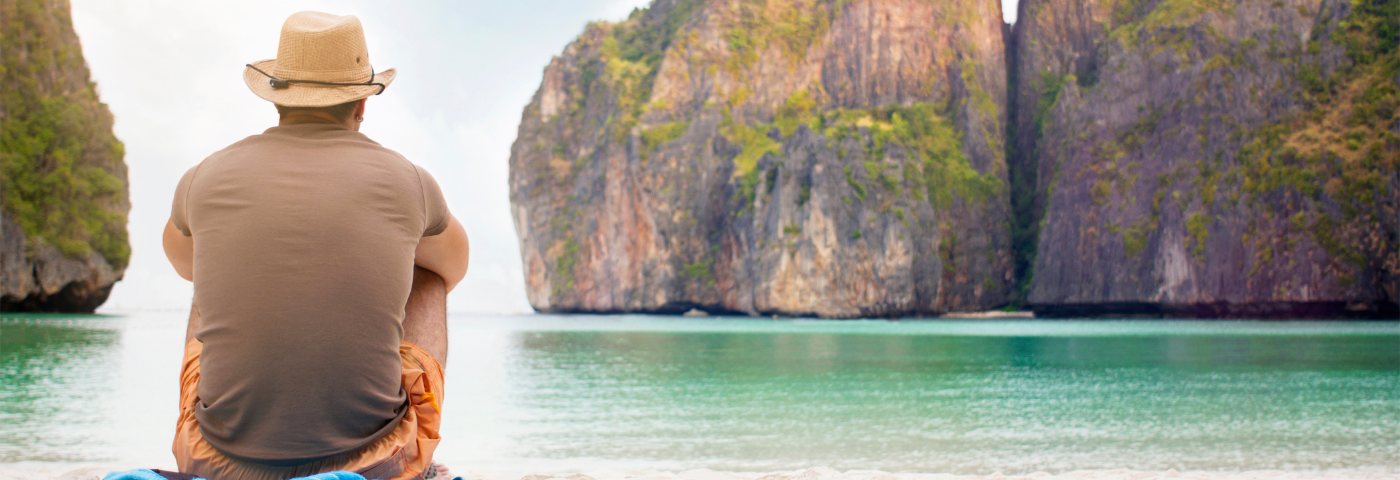
By Tom Mcloughlin, Founder, SEO Travel
When it comes to booking a travel experience, what drives you to visit a new destination? Have you been given a recommendation by a friend? Was the location promoted by a publication or influencer whose judgement you trust? Or have you seen the destination promoted in video ads, on billboards or in print, and been inspired by the captivating visuals and promise of a unique travel experience.
If your answer is the latter, then you’ve had a firsthand experience of the impact of destination marketing.
From promoting an entire country to trying to get more people to visit an unheard-of town or village, destination marketing uses a range of engaging techniques to sell the benefits and features of a location to inspire more people to visit it. This post discusses the use of destination marketing in the tourism industry , explaining how this approach impacts tourism and what brands need to know to make an impression in this sector with their destination marketing campaigns.
What is Destination Marketing?
Destination marketing is a specific approach used by brands in the travel and tourism industry to promote a specific location. Whilst more conventional travel marketing tends to showcase the service or product of a travel company, destination marketing illustrates the features and benefits of a place to get more people to come to it.
The overall aim of destination marketing is to increase customer awareness of a location. By promoting it as a desirable place to visit, the idea is that travellers will think of that destination when they decide to plan a holiday and want to go there. And if it’s a travel company that is promoting a destination, the idea is that the customer will be motivated to book their trip through this brand.
Whilst destination marketing is used by plenty of travel brands as a way of promoting the tours, accommodation or services they offer in specific countries, it’s also a key method of marketing in the tourism industry. Tourist boards and local authorities often rely on destination marketing as a way to promote their town, region or even country with the intention of getting more travellers to visit to boost the local economy and improve their reputation as a holiday destination.
How Does Destination Marketing Impact Tourism?
When used as part of a tourism marketing strategy, destination marketing can have a big impact on how many people visit a location, the kind of travellers that book trips there, and the overall image and reputation of a place.
The goal of this approach is to generate more interest in visiting a location, which increases tourism by bringing more people to an area on holidays and day trips. When done successfully, this can impact a range of factors.
Perhaps the biggest impact that destination marketing has on tourism is that it can massively boost the local economy. Bringing more tourists to an area is better for all kinds of businesses, not just ones providing accommodation and food, and enough growth in popularity also means that there’s the capacity for more businesses to open or expand to meet increasing demand.
Having more people visit a location because of successful destination marketing has the potential to improve its reputation through word of mouth, as if tourists have a good time during their trip they’re likely to recommend a visit to others. This increases interest in a destination further, helping a positive reputation to reach a wider audience and bring in even more tourists.
Destination marketing can also have an impact on the kind of tourism that a location receives, depending on the approach used in marketing campaigns and material. For example, if a destination is advertised as a prime place to visit for outdoor pursuits like hiking or cycling, the majority of the tourists that are going to visit will be interested in these kinds of activities. This means that the location’s most successful attractions and facilities will appeal to this demographic, which may lead local businesses to change their offering to remain relevant.
A more negative impact that destination marketing may have is that it can lead to over-tourism. There are many recorded instances where the popularity of a particular destination has led to environmental damage, locals getting driven out by rising living costs, and overcrowding to the point where the destination gains a negative reputation for being too busy.
This isn’t an issue that many destination marketing companies have to deal with, but it is a potential outcome to bear in mind.
How to Make It Work for Your Brand
Whether you’re a marketing agency working with a tourism board or as part of a travel and tourism marketing campaign, or a travel brand wanting to take a ‘tourism’ angle in your destination marketing approach, here are some of the most important things to remember when it comes to delivering a successful destination marketing campaign.
Find What Makes You Unique
When you’re marketing a destination with the aim of attracting more visitors, what’s going to have the biggest pull is the appeal of a unique attraction or experience. Therefore, all of your destination marketing content should revolve around this unique selling point so that you have the best chance of standing out against competitive destinations.
The more specific your destination, the easier it will be to draw out a unique quality. When marketing a country or a region to increase tourism this can be harder, so instead of trying to identify an attraction or feature that stands out, think about advertising a unique travel experience that the location can provide.
Build your entire destination marketing campaign around this unique selling point, even if it’s not that explicit in some approaches. It will help to deliver a much more cohesive campaign overall and ensure that your location sticks in potential visitors’ minds .

Choose a Traveller Demographic
Any kind of marketing campaign works best when you have a specific audience in mind. Advertising a location is no different.
Whilst you may think that promoting a location as part of tourism efforts should try and target as many potential visitors as possible, it also means that a lot of your marketing efforts are going to be quite vague as they try to appeal to numerous different groups. Sure, you’ll still get a reasonable response from some people that are engaged by your promotion of the place, but conversion rates tend to be lower when you don’t have a specific demographic in mind.
After you’ve identified what it is that makes your destination unique, establish the kind of traveller to whom this unique factor is going to appeal. You should create profiles for typical people within this demographic, detailing the kinds of travel experiences they enjoy, their pain points when visiting new destinations, and any particular content formats or marketing techniques they respond well to or frequently engage with.
Once you have this target audience in mind, try and shape your destination marketing around them. You may be appealing to a smaller group, but you’re likely to get a much higher percentage of them to engage with what you’re sharing.
Make it Personal
One of the most effective techniques you can use in a destination marketing campaign is using a personal hook to make your content more engaging.
This is particularly useful when you’re simply promoting a location, as your main intention is to get your target audience to start picturing themselves there so that they develop the desire to visit. It’s much easier for them to do this when you present a personal, relatable experience with your content, be that in text, video or audio format.
One of the simplest ways to make destination marketing personal is to capture real people experiencing the location, focusing on finding the best ways to present different sensory elements. Video is one of the best formats to do this, especially when you create content with lots of stunning visual elements that elicits an emotional response.
Getting local people to tell stories about a destination is also a brilliant technique for making your destination marketing content more personal, which also works really well in a written or audio format. This also allows you to share exclusive insight into a place, giving a more authentic feel to your marketing material.
Recognise Trends, but Think Long-Term
The popularity of plenty of destinations is affected by travel trends. Whether your destination offers a desirable climate, activity or cultural experience, responding to trends to capture audience interest as it peaks can seem like the ideal marketing strategy.
The thing to remember with trends however is that they don’t often last for long. Your destination may be all the rage for a single season, but hype often quickly dies down as travellers find something new to get excited about, meaning that what was once ‘trendy’ about your location may not stay that way for long.
Acknowledging and capitalising on trends as part of your destination marketing campaign is a good idea, but it’s important not to put all of your eggs in this brand new basket and keep long-term planning in mind as well. The last thing you want is to splurge all your resources on an approach that’s only going to be relevant for a few months. So use more instant channels like social media and email to respond to trends, and ensure that things like written and video content and advertisements are more evergreen.
Utilise Reputation and Association
Influencer marketing is an incredibly useful approach to include in your destination marketing strategy if possible. A key objective for destination marketing companies is to increase awareness of a location, and having an affiliation with a well-known figure can have a really positive impact on this.
The more famous or recognized the person you work with is, the more attention your marketing campaigns are going to get. But whilst we’d all like to dream of partnering with an A-list celebrity to promote our target destination, this probably won’t be a reality for most brands, which is where working with influencers comes in.
Whether they’re known for their presence on social media, in print or on a video channel like YouTube, we recommend working with either a travel influencer or someone who has a following that overlaps with the demographic you’re trying to appeal to. Having your destination endorsed and associated with someone that already has a trusted reputation will bring positive associations to your location and increase the reach of your promotional material.

Deliver What You’re Advertising
This last piece of advice might seem obvious, but it’s very important not to oversell your target location in any of your marketing material. You’re obviously going to promote the best version of your destination to catch as much attention as possible, but when people do actually visit you need to ensure that they’ll experience what they were promised.
If the place you advertise is nothing like the place visitors arrive, your destination marketing campaign is quickly going to stop bringing in any kind of tourism. It’s okay to romanticise and glamourise aspects to engage your target audience, but ensure that you’re promising an experience that you can deliver on if you want word to spread about your location in a positive way.
Whilst destination marketing was initially just associated with tourist boards and adverts for different countries, it’s an approach that has been used by a wide variety of travel brands as a new way to reach customers and subtly promote their services. It’s still important to understand the best practices and the potential impact if you’re using destination marketing in tourism to help raise awareness and improve the image of a location, and we recommend you check out our other posts in the destination marketing series if you’re looking for more information and inspiration.
If you need more information or help with your travel marketing strategy or want to find out more about approaches like destination marketing, get in touch with SEO Travel for a chat and to find out more about the range of marketing services that we offer.

Share this:
Leave a comment cancel reply.
Your email address will not be published. Required fields are marked *

Destination Branding
Destination Branding: Every destination is different. Transforming the tourism destination into attractive brand is a relatively new concept. The various changes in the value system, for instance, in segmenting target groups, new dynamics of communication and media and orientation towards sustainability is to be revisited for establishing the brand.

Since the beginning of the tourism, the packages offered remain differentiated and attractive in terms of market supply, price and communication contributing in elevating the world tourism. The customer demand for the everlasting thrill cue the need to redesign the package to make a difference for the mesmerising unparalleled experience. The brand management aim to offer the combination of its’ own superordinate performance and the people expectations about their life shortages (dreams, desire, hopes etc.).
Concept of Destination Brand
Destination: The word ‘Destination’ originated from latin word ‘destinare’ means ‘make firm, establish’ that indicate point of disembarkation. A destination may be a geographic area consisting of all the services and infrastructure necessary for the stay of a selected tourist or tourism segment (WTO 1992 or Bieger 1996). Destinations are the competitive units of incoming tourism.
Destination brand is the destination’s essence comprising of core values making it distinct with a competitive edge. It largely depends on the values that the place carries. The story narrated by the place about its historical strength is the attraction represented to the visitors in the form of Destination Brand.
Destination Positioning is the art of developing and communicating meaningful differences between a region’s tourism offerings and those of competitors serving the same target market (Heath & Wall, 1992:115).
“Positioning starts with a product. A piece of merchandise, a service, a company, an establishment , or maybe an individual . But positioning isn’t what you are doing to a product. Positioning is what you are doing to the mind of the prospect. That is you position the merchandise within the mind of the prospect.”
“Positioning is that the act of designing the company’s offering and image to occupy a particular place within the target market’s mind.” (Philip Kotler. Marketing Management: The Millennium Edition).
A four step model was proposed by Heath & Wall in 1992. The steps are as follows; Step 1: Assess the current position in comparison to its competitors. Step 2: Select the desired position in which destination to be developed and communicating the same. Steps 3 and 4: Planning and implementation of the strategy is challenging as to reposition a destination. Heath and Wall have quoted an instance of converting a tourism region into a region rich in cultural heritage. How the region should be communicated after developing the selected area to be projected as heritage (Heath and Wall, 1992: 120).
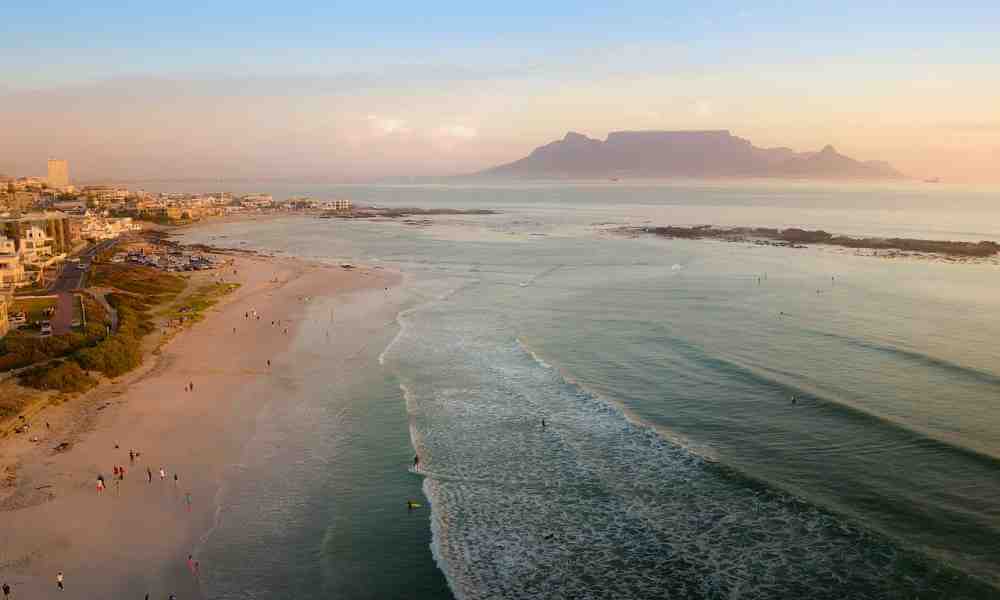
Branding the Destination positioning
“A brand may be a name, term, sign, symbol, or design, or combination of them, intended to spot the products or services of 1 seller or group of sellers and to differentiate them from those of competitors.” (Kotler, Philip. 2000).
A brand is a combination of both functional and non-functional meaning uniquely engraved in the mind of the tourists. “Branding is probably the foremost powerful marketing weapon available to contemporary destination marketers” (Morgan and Pritchard, 2002, p. 11)
Destination Marketing Organizations (DMO) referred destination branding as the promotion and marketing of their place to a specific audience of business or leisure travellers. Destination branding is the process of developing a unique personality and image differentiating from all competitors. Destination branding is “selecting a uniform brand element mix to spot and distinguish a destination through positive image building” (Cai, 2000)
Destination branding is to collaborate with all the associated industry of that place to offer a pleasing long lasting experience to the tourist. The aim is to capture the essence of the place and deliver the package with additional values to differentiate and sustain the competition. A destination brand is not merely an advertising tagline, logo, color scheme or, attractive websites; it’s the way of communicating the identity, differentiation points, a uniformity among destination partners and combination of symbol, design, name and slogan. The differentiation created should be consistent with the perception keeping the emotional appeal of the tourist segment.
The brand destination winning strategies are the projection of emotional richness, the conservational value with rhyme of difference which passes a strong message of “A place worth visiting” (Morgan, Pritchard & Pride, 2002). The brand cycle should be revealed in S-curve through a series of stages, Weinreich (1999: 25-6). Every place is born small, which follow their visitors who are the trendsetters, fewer but the opinion-formers for the construction of the place in a meaningful way. Slowly the destination becomes famous and tourist switches in search of next stop.
The better known places sometime lose their brand values in terms of when it becomes irrelevant to the tourist by losing its appeal. Familiarity snatches the attractiveness and makes the destination fade. If badly destructed, need to revisit the destination brand values and revitalise the core values.
Destination Branding is the most challenging event of the brand managers. It is the holistic approach to develop a destination for tourism. The branding is highly dependent upon the tourists who sign in as trendsetters and leave their signature for further development. The destination has the cultural attraction presented in the form of rhyme and the emotional appeal to form the bonding and develop the loyalty of the visitors. The image is portrayed to reflect all the beauty of the destination. The positioning of the destination is done to present a distinct unique image of the place in the mind of tourists that helps in destination branding.
You may also read this Destination Positioning
You might also like.

HOTEL COMPUTER RESERVATION SYSTEM
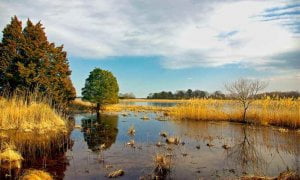
Empowering Local Communities through Tourism
Check out our new Consent management feature here
- Case Studies
- Book a Demo
The Benefits of Eco-Tourism Branding
Discover the advantages of incorporating eco-tourism branding into your business strategy.
Eco-tourism branding has become an integral part of the travel and tourism industry in recent years. With a growing awareness of the impact of our actions on the environment, travellers are increasingly seeking out eco-friendly destinations and experiences. In this article, we will explore the benefits of eco-tourism branding, including its definition, evolution, importance, economic advantages, environmental benefits, social and cultural benefits, case studies of successful branding, and the challenges faced in this industry.
Understanding Eco-Tourism Branding
Before we delve into the benefits of eco-tourism branding, it is important to have a clear understanding of what this term entails.
Eco-tourism branding refers to the process of marketing and promoting travel destinations and experiences that are environmentally friendly, socially responsible, and economically viable. It involves creating a unique identity for a destination that emphasizes sustainability, conservation, and appreciation of the natural and cultural heritage.
When it comes to eco-tourism branding, it is not just about attracting tourists to a particular destination. It is about creating a harmonious relationship between tourism, the environment, and the local communities. This type of branding goes beyond simply promoting beautiful landscapes or exotic wildlife. It aims to educate and engage tourists in sustainable practices, while also supporting the local economy and preserving cultural traditions.
Definition of Eco-Tourism Branding
Eco-tourism branding is a multifaceted approach that encompasses various aspects of responsible travel. It involves carefully selecting and promoting destinations and experiences that align with the principles of sustainability and conservation. By doing so, eco-tourism branding seeks to minimize the negative impacts of tourism on the environment and maximize the positive contributions it can make to local communities.
One key aspect of eco-tourism branding is the emphasis on environmental preservation. This involves promoting destinations that have taken measures to protect their natural resources, such as implementing sustainable practices, supporting wildlife conservation projects, and minimizing pollution and waste. By showcasing these efforts, eco-tourism branding aims to attract tourists who are conscious of their environmental footprint and who want to contribute to the preservation of the planet.
Another important element of eco-tourism branding is social responsibility. This involves promoting destinations that prioritize the well-being and empowerment of local communities. It includes supporting local businesses, providing employment opportunities for residents, and fostering cultural exchange between tourists and locals. By doing so, eco-tourism branding aims to create a positive impact on the social fabric of the destination, while also enhancing the overall travel experience for visitors.
The Evolution of Eco-Tourism Branding
Over the years, the concept of eco-tourism branding has evolved to meet the changing needs and desires of travelers. Initially, eco-tourism was focused primarily on conservation and environmental protection. However, it has now expanded to include a broader range of factors, such as community involvement, cultural preservation, and responsible business practices.
In the early days of eco-tourism branding, the focus was on raising awareness about the importance of preserving natural habitats and biodiversity. The emphasis was on promoting destinations that offered opportunities for nature-based activities, such as hiking, wildlife spotting, and bird watching. These destinations were often remote and untouched, providing a sense of adventure and exploration for eco-conscious travelers.
As the concept of eco-tourism gained popularity, it became clear that environmental conservation alone was not enough. Travelers began to demand more meaningful experiences that allowed them to connect with local communities and learn about their cultures and traditions. This led to the inclusion of community involvement and cultural preservation as key components of eco-tourism branding.
Today, eco-tourism branding goes beyond promoting destinations. It also involves educating tourists about sustainable practices and encouraging them to make responsible choices during their travels. This includes supporting local businesses, respecting local customs and traditions, and minimizing the use of resources. By engaging tourists in these activities, eco-tourism branding aims to create a sense of ownership and responsibility among travelers, empowering them to become ambassadors for sustainable travel.
In conclusion, eco-tourism branding is a holistic approach to travel marketing that promotes destinations and experiences that are environmentally friendly, socially responsible, and economically viable. It has evolved over the years to encompass a wide range of factors, including environmental conservation, community involvement, cultural preservation, and responsible business practices. By embracing eco-tourism branding, destinations can attract conscientious travelers who are not only seeking a memorable holiday but also want to contribute to the well-being of the planet and its people.
The Importance of Branding in Eco-Tourism
Effective branding plays a crucial role in the success of any eco-tourism venture. It helps destinations and businesses differentiate themselves from others in a crowded marketplace and attract the attention of environmentally conscious travelers.
Eco-tourism is a rapidly growing industry that caters to individuals who are passionate about exploring the natural world while minimizing their impact on the environment. With the increasing popularity of eco-tourism, it has become essential for destinations and businesses to establish a strong brand identity that resonates with this specific target audience.
Creating a Unique Identity
By developing a strong brand identity, eco-tourism destinations can stand out from the competition and showcase their commitment to sustainability. It goes beyond just having a catchy logo or tagline; it involves creating a comprehensive brand strategy that reflects the core values and mission of the destination or business.
One example of a destination that has successfully created a unique brand identity in eco-tourism is Costa Rica. Known for its rich biodiversity, Costa Rica has positioned itself as a leader in sustainable tourism. Their brand identity revolves around the concept of "Pura Vida," which translates to "pure life" in English. This phrase embodies the country's commitment to preserving its natural resources and promoting a harmonious relationship between humans and nature.
Costa Rica's branding efforts have paid off, as it has become a sought-after destination for eco-conscious travelers. The country's unique identity sets it apart from other destinations and creates a sense of authenticity that resonates with environmentally conscious individuals.
Building Trust and Credibility
Eco-tourism branding builds trust and credibility among travelers, as it assures them that the destination or business is genuinely committed to responsible practices. In an industry where greenwashing can be prevalent, establishing trust is crucial for the long-term success of eco-tourism ventures.
One way eco-tourism businesses can build trust is by obtaining certifications and accreditations from recognized organizations. For example, the Global Sustainable Tourism Council (GSTC) provides a set of criteria that destinations and businesses can adhere to in order to demonstrate their commitment to sustainability. By obtaining GSTC certification, eco-tourism ventures can showcase their credibility and differentiate themselves from competitors.
Another important aspect of building trust is transparency. Eco-tourism destinations and businesses should be open about their practices and initiatives. This includes sharing information about their conservation efforts, waste management systems, and community involvement. By being transparent, they can build a rapport with travelers and establish a sense of authenticity.
Furthermore, word-of-mouth recommendations play a significant role in the success of eco-tourism ventures. When travelers have positive experiences, they are more likely to share their stories with others, which can lead to increased visitation. A strong brand identity that focuses on sustainability and responsible practices can generate positive word-of-mouth recommendations, contributing to the long-term success and growth of the eco-tourism industry.
Eco-tourism branding brings forth a multitude of benefits, encompassing economic advantages, environmental benefits, and social and cultural benefits.
Economic Advantages
Eco-tourism branding has the potential to boost local economies by attracting tourists who are willing to pay a premium for sustainable experiences. The revenue generated from eco-tourism can support local businesses, create employment opportunities, and contribute to the overall economic development of communities.
Environmental Benefits
One of the most significant benefits of eco-tourism branding is its positive impact on the environment. By promoting sustainable practices, such as responsible waste management, energy conservation, and the preservation of natural habitats, eco-tourism can help protect fragile ecosystems and biodiversity.
Social and Cultural Benefits
Besides economic and environmental advantages, eco-tourism branding also brings about social and cultural benefits. By involving local communities in the planning and development of eco-tourism initiatives, it fosters a sense of pride and ownership. This can lead to the preservation of cultural traditions, the revitalization of local industries, and the improvement of living standards for residents.
Case Studies of Successful Eco-Tourism Branding
To truly understand the power of eco-tourism branding, let's take a closer look at two successful case studies.
Costa Rica: A Pioneer in Eco-Tourism Branding
Costa Rica has become synonymous with eco-tourism and is widely regarded as a global leader in this field. The country has effectively marketed its unique biodiversity, diverse ecosystems, and commitment to sustainability. As a result, it attracts millions of eco-conscious travellers each year, boosting its economy while preserving its natural heritage.
New Zealand: Branding the 'Clean and Green' Image
New Zealand has successfully branded itself as a 'clean and green' destination, positioning itself as an ideal location for eco-tourism. By promoting its stunning landscapes, pristine wilderness, and sustainable practices, the country has captured the attention of travellers seeking authentic nature-based experiences.
Challenges in Eco-Tourism Branding
While eco-tourism branding offers numerous benefits, it also faces its fair share of challenges.
Balancing Profit and Sustainability
One of the key challenges is finding the right balance between profitability and sustainability. Eco-tourism ventures need to generate income to remain viable, but it is essential not to compromise on responsible practices. Striking this balance requires careful planning, ongoing evaluation, and a commitment to long-term sustainability.
Overcoming Misconceptions and Stereotypes
Eco-tourism often faces misconceptions and stereotypes, with critics accusing it of being 'greenwashing' or mere marketing tactics. Overcoming these preconceptions requires transparent communication, providing evidence of genuine eco-friendly practices, and educating travellers about the true meaning and benefits of responsible tourism.
In conclusion, eco-tourism branding offers a host of benefits, ranging from economic advantages and environmental benefits to social and cultural advantages. Through effective branding, destinations can establish a unique identity, build trust among travellers, and contribute to long-term sustainability. While challenges exist, with careful planning and a commitment to responsible practices, eco-tourism branding has the potential to make a positive impact on individuals, communities, and the planet.

IMAGES
VIDEO
COMMENTS
Marketers distinguish two types of branding in this domain: tourism sector branding and travel business branding. In this article, we will discuss both.
Branding travel and tourism is important for many reasons. So find out why branding matters, and what you can do to make your brand better.
Definition of Destination Branding. Destination branding, or place branding, is the process of identifying, crafting, and nurturing the unique identity of a geographical location to distinguish it from its competitors. This involves creating a compelling image and message that resonates with potential visitors, encapsulating everything from the ...
Your branding is what helps guests remember, trust and rebook with you. Learn the steps for branding travel and tourism businesses.
The "City Brand Barometer 2020" conducted by branding consultancy Saffron, showed that even with the global pandemic, Paris still ranks at the top of the list of desired destinations to visit, thanks to the strength of their brand. Further, the ranking showed London and Tokyo following closely behind in top city brands.
Introduced by an essay by Simon Anholt on the importance of building a national brand image, the Handbook on Tourism Destination Branding provides a step-by-step guide to the branding process accompanied by strategies for brand management. Case studies are featured throughout the Handbook to illustrate the various concepts, present best ...
Here's what you can expect: Discover the power of travel branding: Understand how a strong brand can attract travelers, build loyalty, and drive revenue. Navigate the industry's shifting sands: Explore current trends and challenges, from sustainable tourism to digital disruption, and learn how to adapt your brand.
Tourism Brand Style Guide - what is it, what to include and how to create it. Step by step information to help you craft consistent content and messaging.
Learn how to craft a successful tourism brand identity. Discover tips to create a strong and appealing brand for travelers. Read more on HIVO!
Destination Branding Research Insights. Destination branding research is a comprehensive area that seeks to analyze and understand how specific locations, such as cities, regions, or tourist spots, are viewed by audiences worldwide. It delves into the elements that shape a destination's image and appeal, taking into account its unique culture ...
Handbook on Tourism Destination Branding. Published: 2009 Pages: 195. eISBN: 978-92-844-1311-9. Abstract: Tourism has become one of the world's fastest growing economic sectors in recent years. Governments around the world are increasingly recognising the power of tourism to boost their nation's development and prosperity. As more tourism ...
The time has come to unleash the power of branding in tourism. And to understand how an innovative branding approach for destinations can help reposition and reshape tourism towards a more sustainable, humane, accessible and inclusive model.
Transform your destination's image with a distinct brand voice. Learn how to use unique characteristics to build an emotional connection and attract more tourism.
Why is Branding in the Travel and Tourism Industry Important? The main objective of branding is to ensure that your business stands out from the crowd. As a travel company or tour operator, you're well aware of the competition that is currently either providing similar activities and experiences as you or simply operating within your vicinity. You need to ensure your activities make a bigger ...
Top examples of destination branding. Tourism Northern Ireland - Winner of The 2020 Travel Marketing Awards, Category Destination Brand of the Decade, image courtesy of Monotype. 'Northern Ireland - Embrace a Giant Spirit' brand focusing on experiences, heritage and belonging, courtesy of Monotype and Genesis. Courtesy of Lantern.
Destination branding is driven by three main factors, which represent the fundamentals of a destination brand: reputation, identity and perception. Reputation is the sum of the beliefs or opinions about the destination, it needs to be built, protected, maintained and changed, if needed, over time. .
Defining Brand Vision and Mission. A brand vision encapsulates the aspirations and goals of your tourism business. It defines the desired impact you want to make and the unique value you aim to deliver to your customers. A brand mission, on the other hand, outlines the core purpose of your tourism brand.
Odds are there's more than one tour company competing for your customers' attention — superior travel branding is a way to win them over. Every tourism business knows there's power in branding.
Branding tourism and hospitality products is a strategic marketing management tool as competition in the marketplace has become fierce in the contemporary business environment. Price is the only component of the marketing mix that produces revenue (Kotler & Armstrong, 2019).
How to Build a Successful Destination Brand The tourism industry is one of the most universally robust industries in the world. Hundreds of thousands of people travel every year, and there are many types of travelers who feed into the industry. Even more people work in the tourism sector. So, how do you attract potential visitors to your tourism destination?
What is Destination Marketing? Destination marketing is a specific approach used by brands in the travel and tourism industry to promote a specific location. Whilst more conventional travel marketing tends to showcase the service or product of a travel company, destination marketing illustrates the features and benefits of a place to get more ...
Destination Branding Destination Branding: Every destination is different. Transforming the tourism destination into attractive brand is a relatively new concept. The various changes in the value system, for instance, in segmenting target groups, new dynamics of communication and media and orientation towards sustainability is to be revisited for establishing the brand.
Eco-tourism branding has become an integral part of the travel and tourism industry in recent years. With a growing awareness of the impact of our actions on the environment, travellers are increasingly seeking out eco-friendly destinations and experiences. In this article, we will explore the benefits of eco-tourism branding, including its definition, evolution, importance, economic ...